This document provides an overview of information retrieval and the Boolean model. It defines information retrieval as finding relevant documents from large collections to satisfy an information need. The document introduces the Boolean model, including using a term-document matrix and inverted index to process Boolean queries. It discusses how Boolean queries are implemented by intersecting postings lists and optimizing for conjunctions and disjunctions. The challenges of Boolean search at scale are also covered.
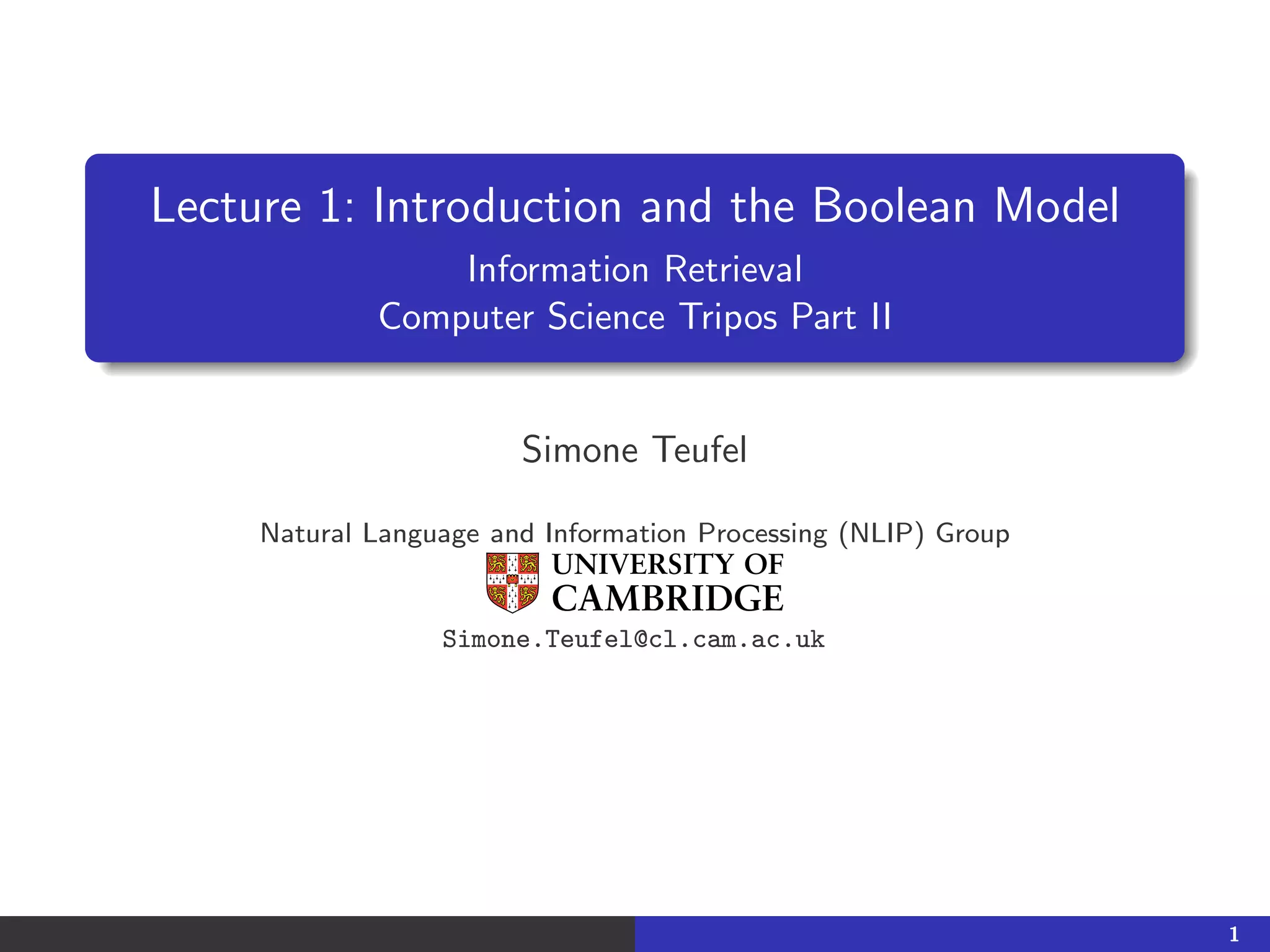
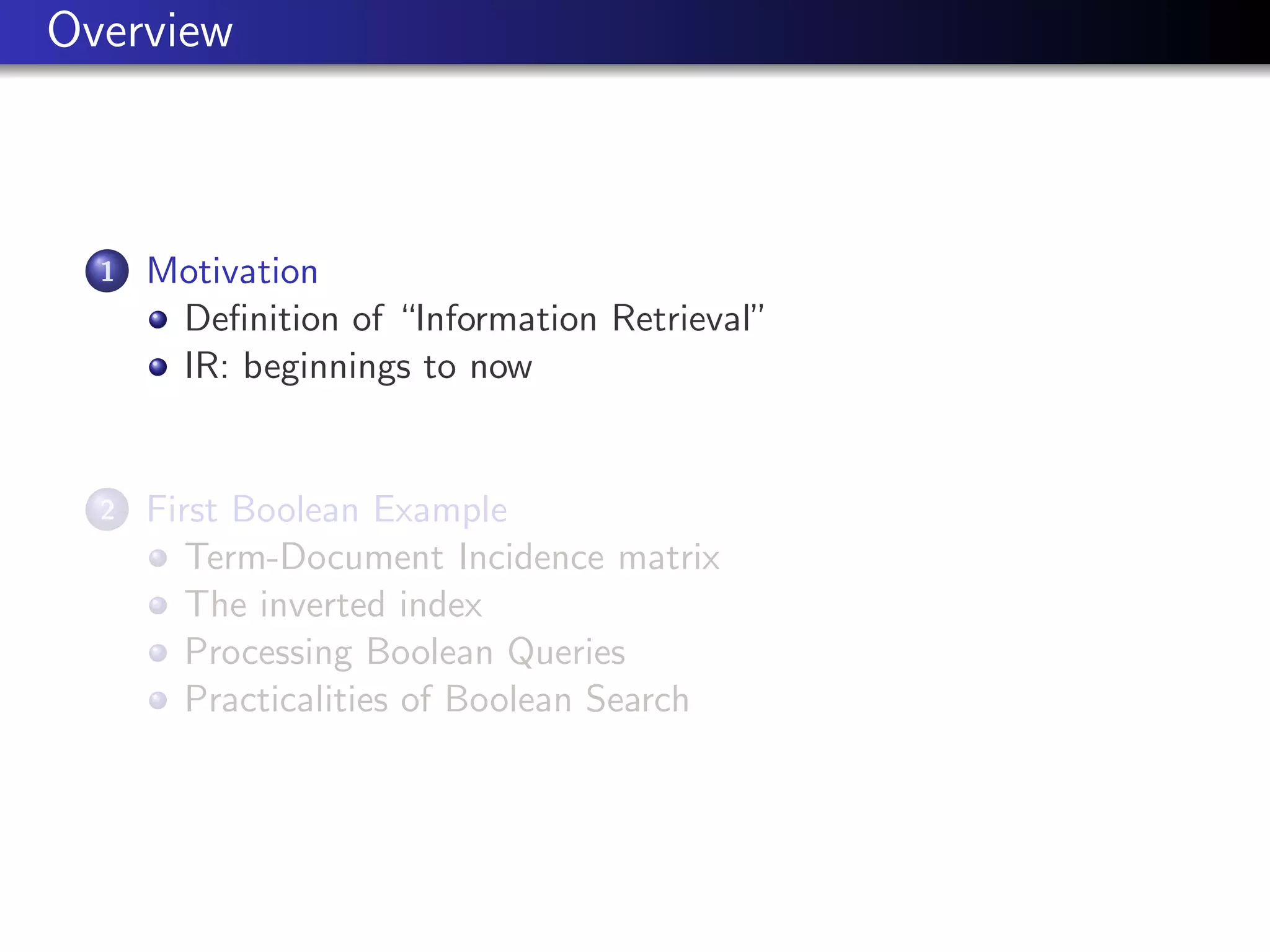
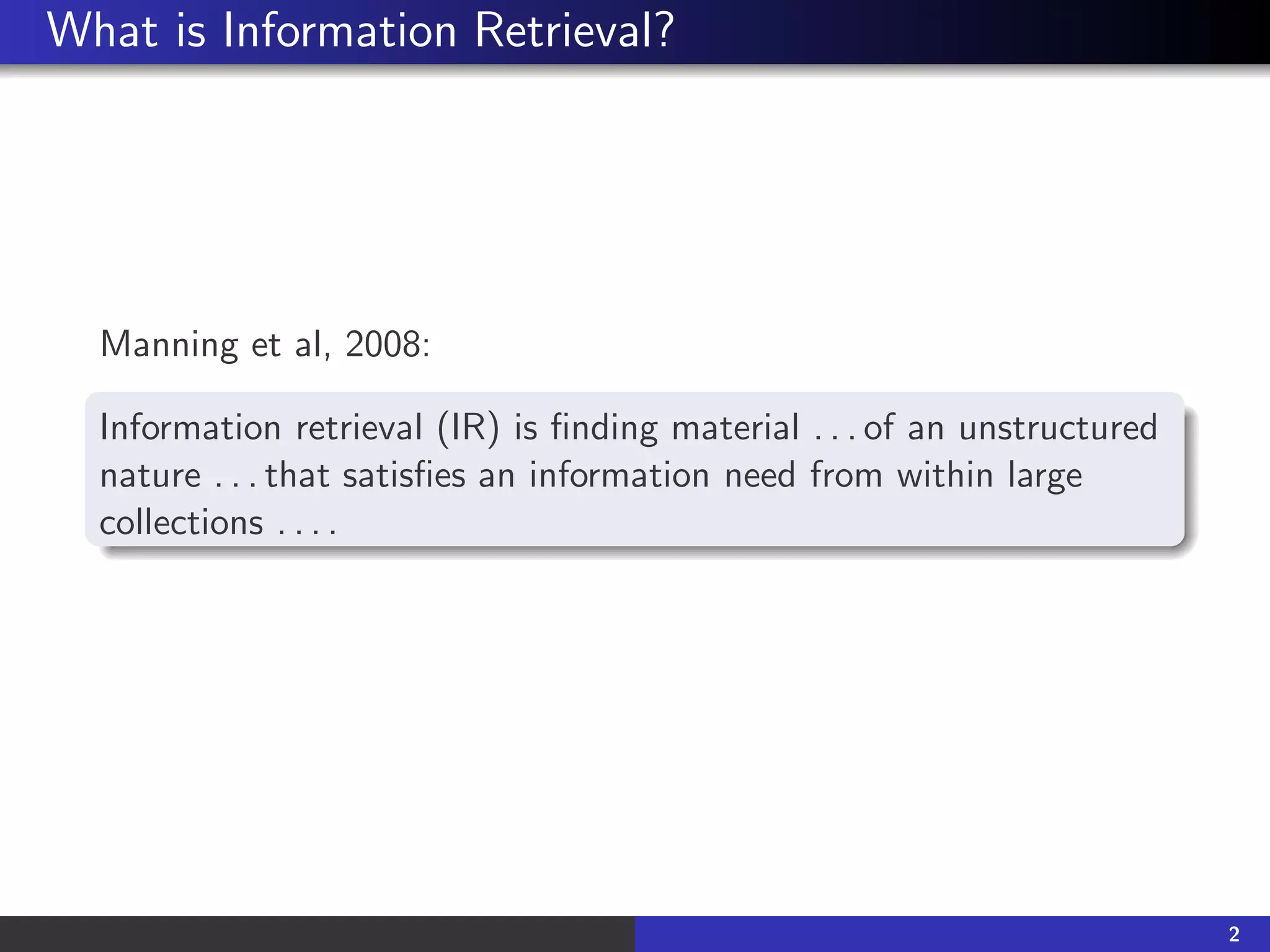

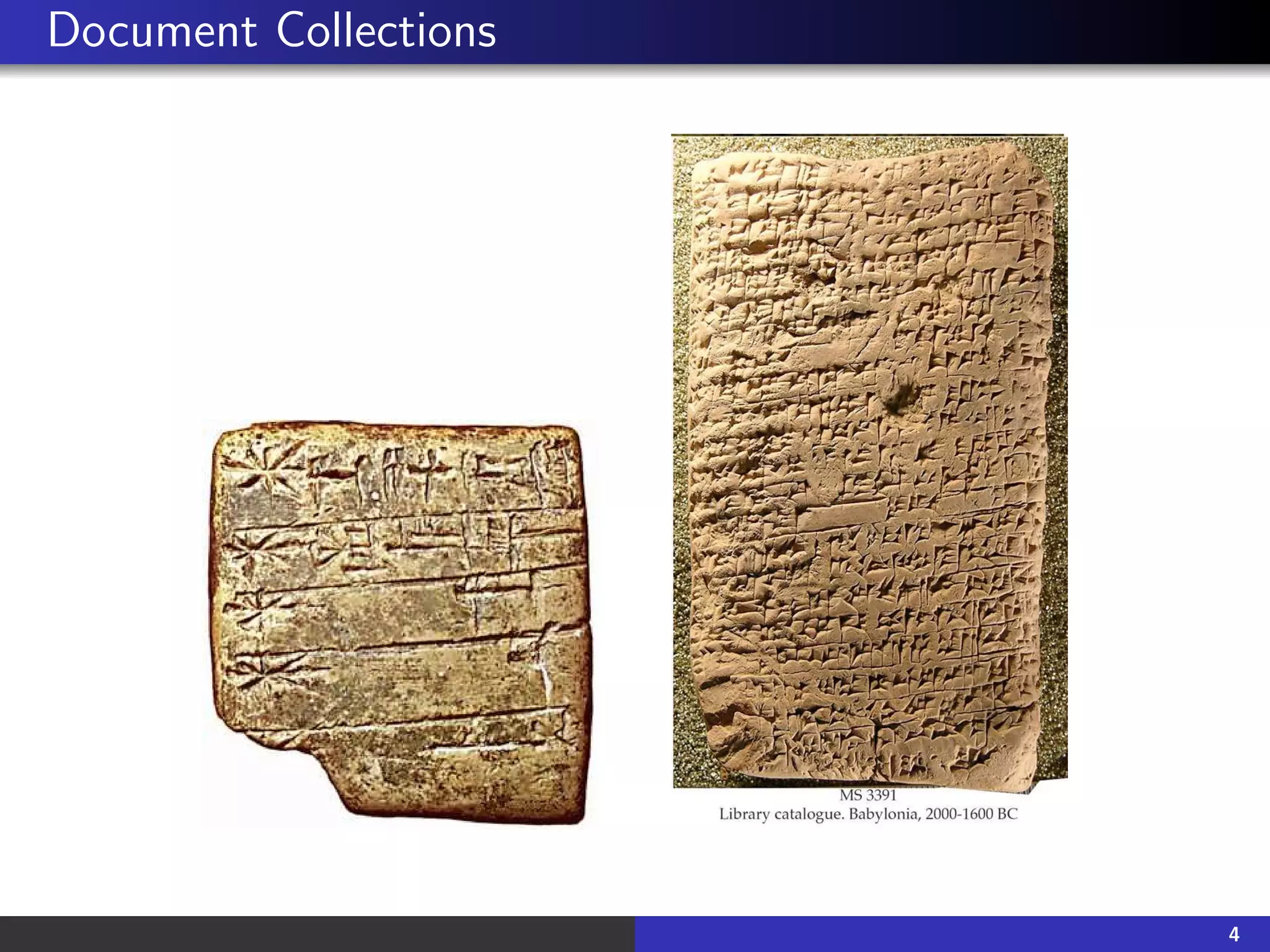
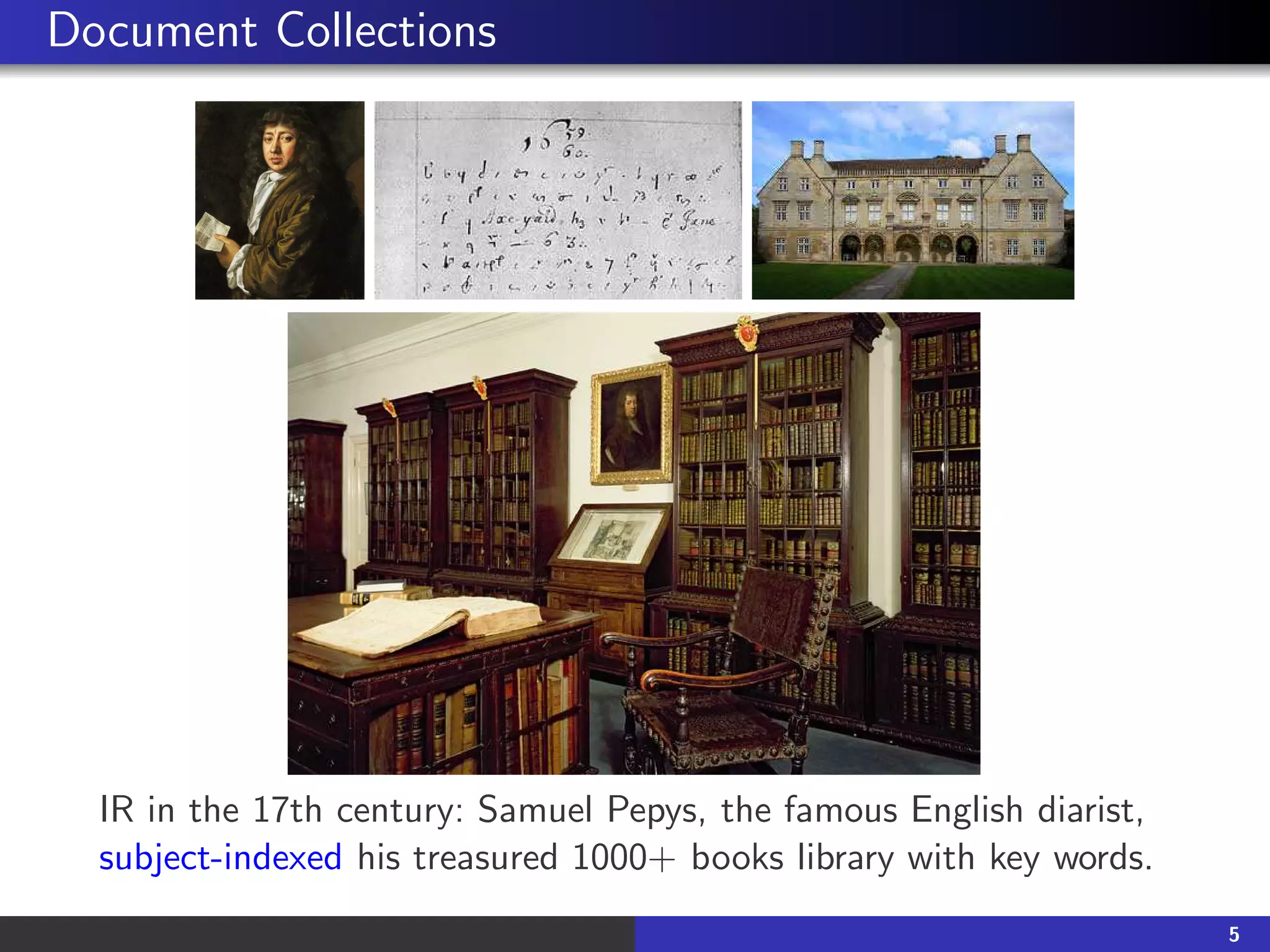


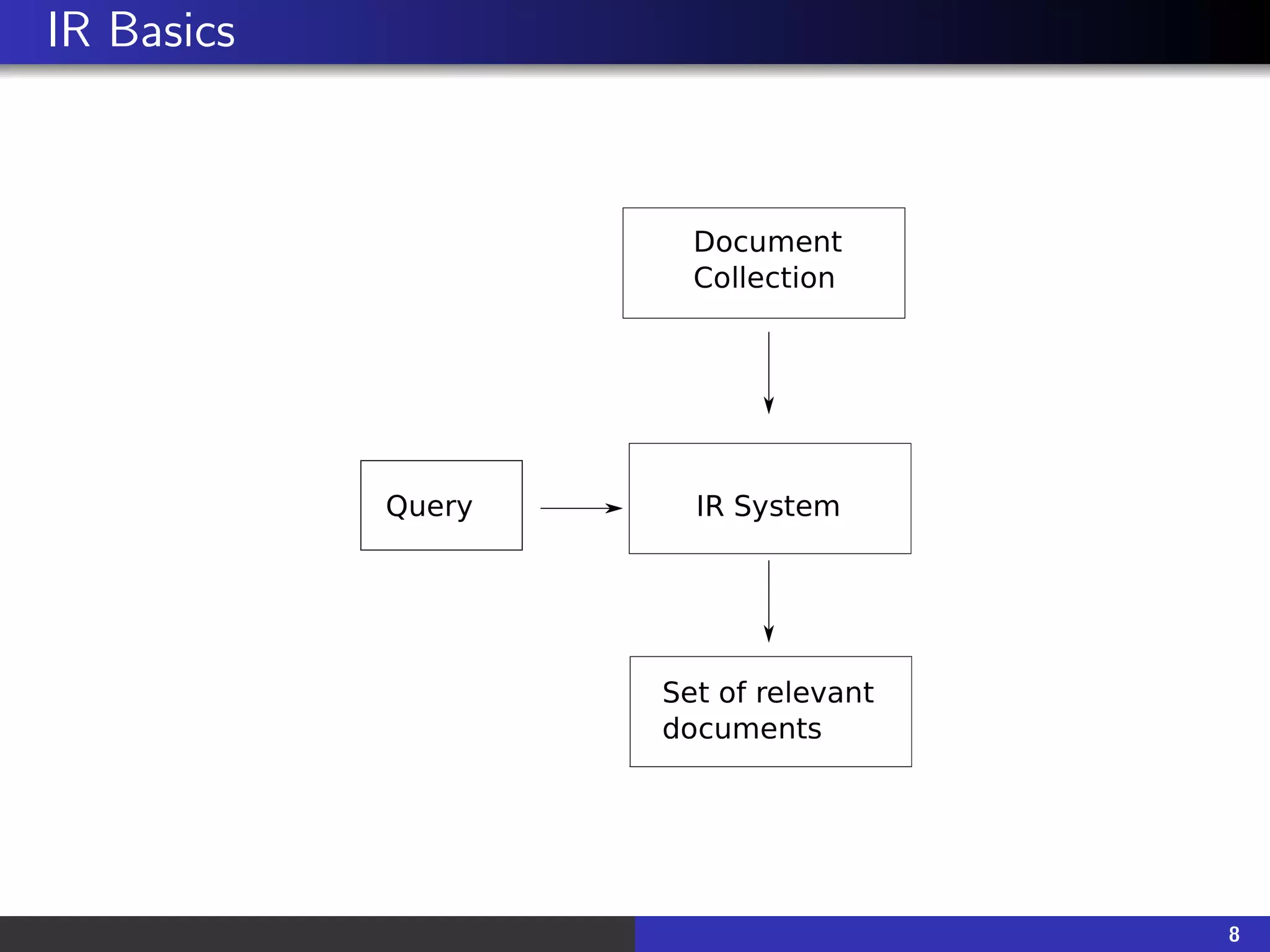
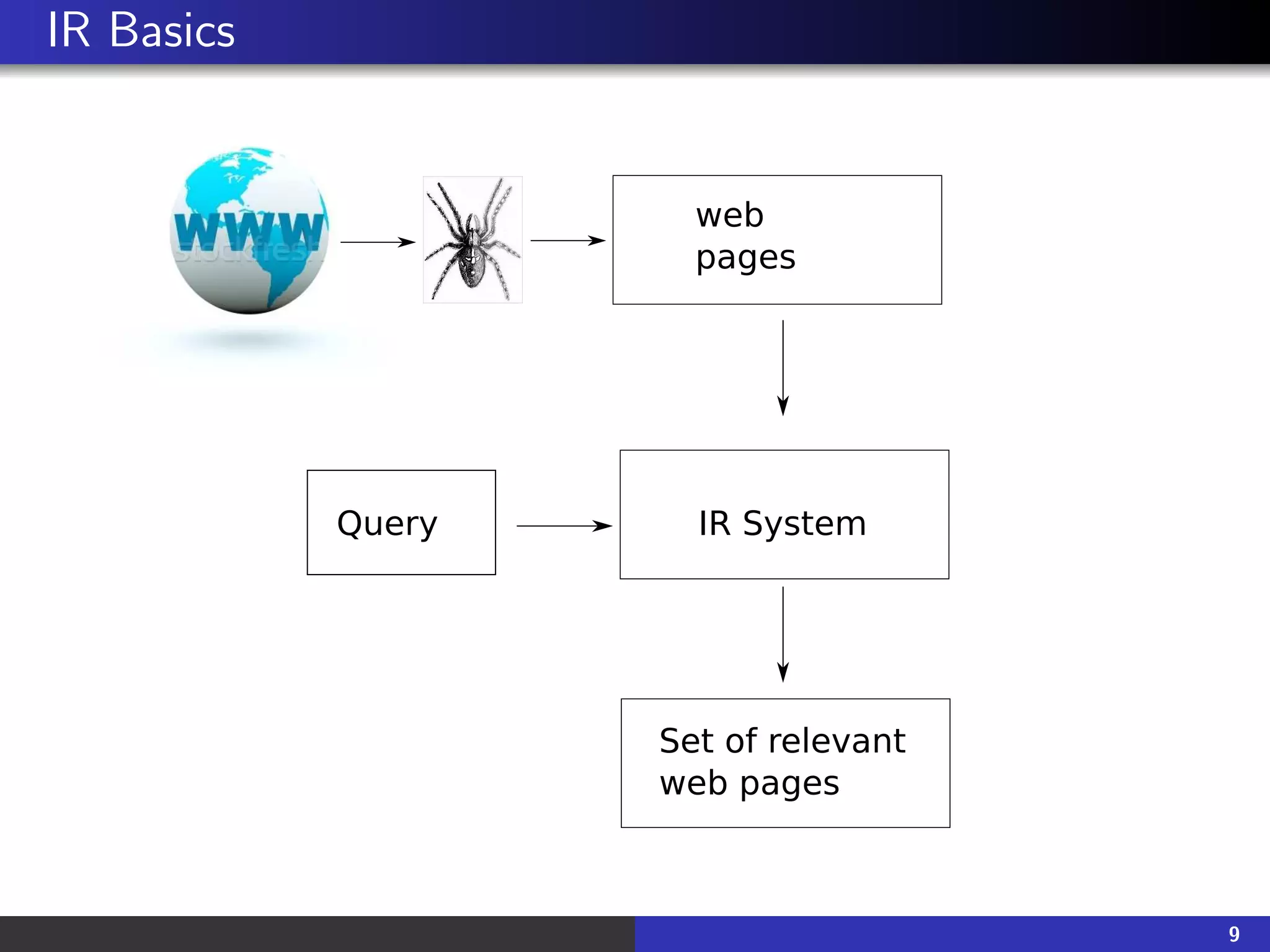
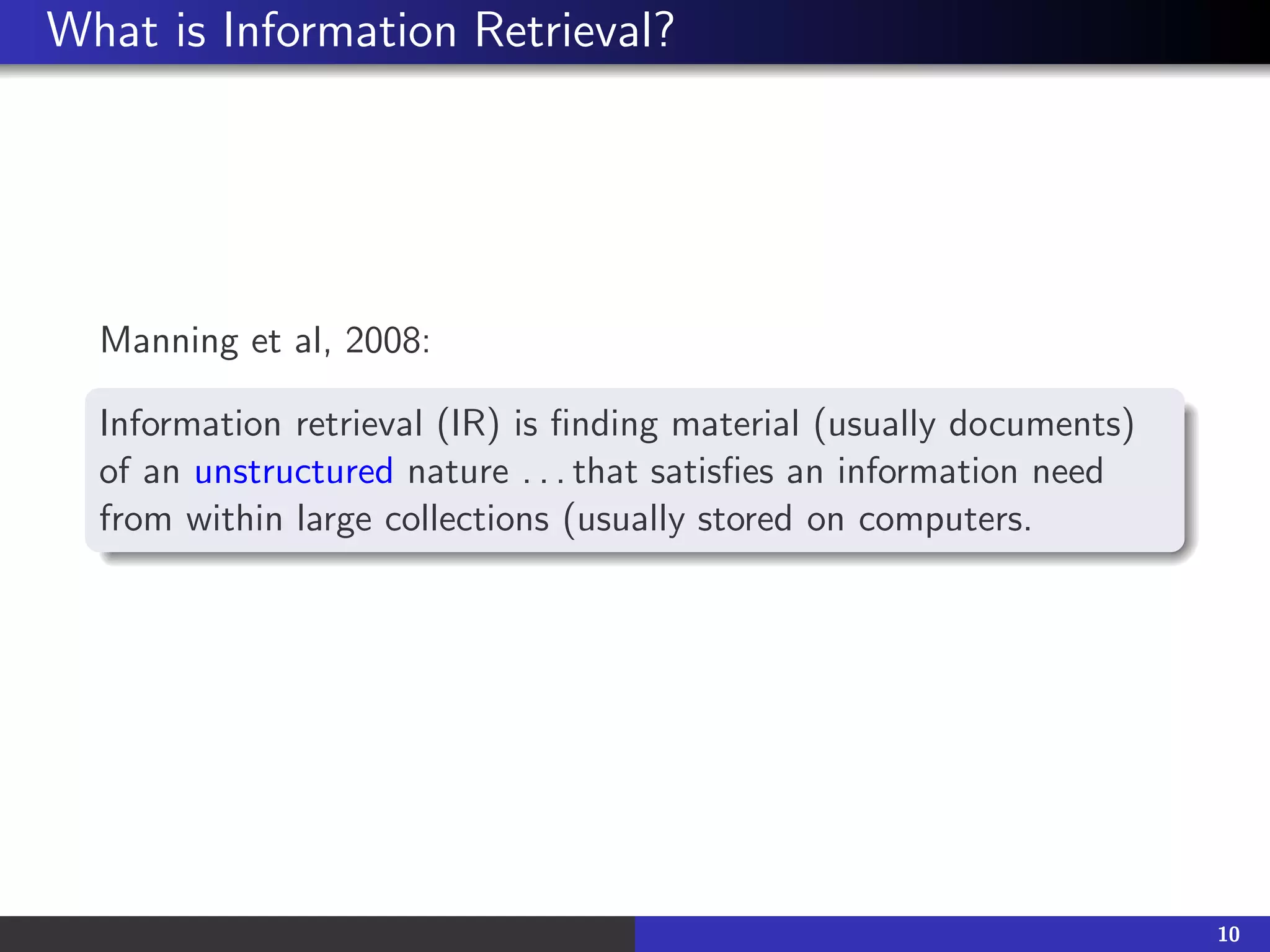
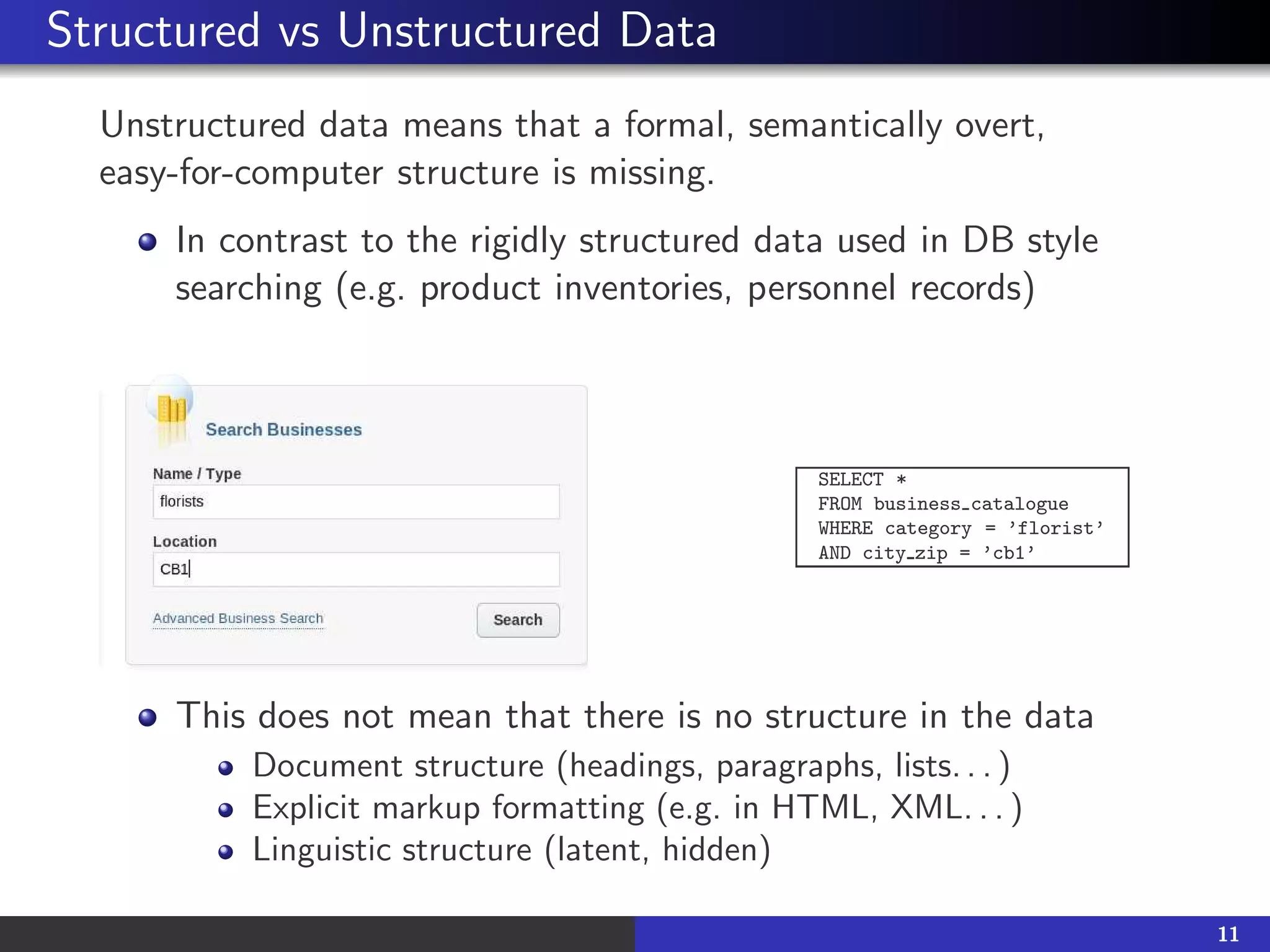
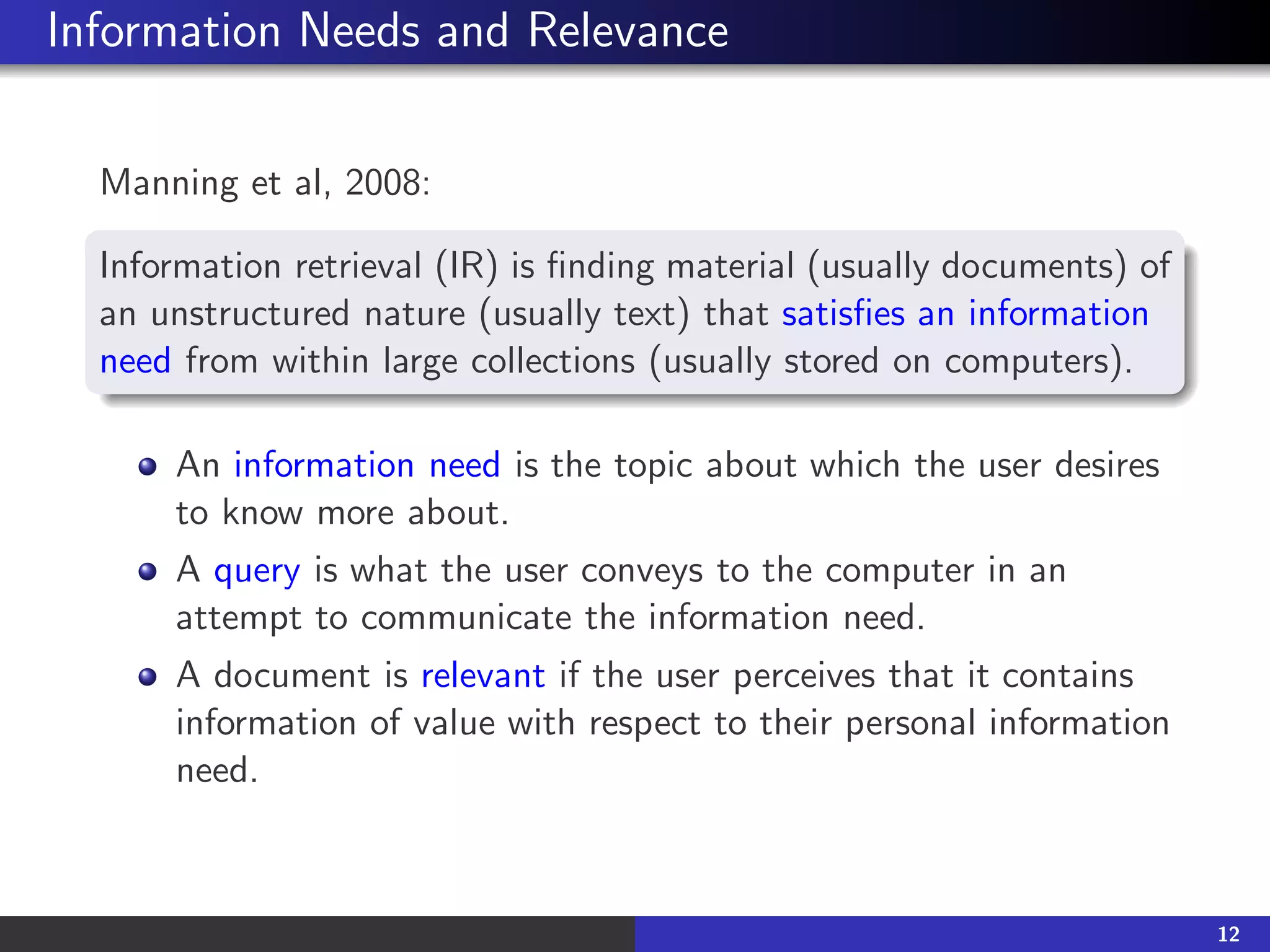
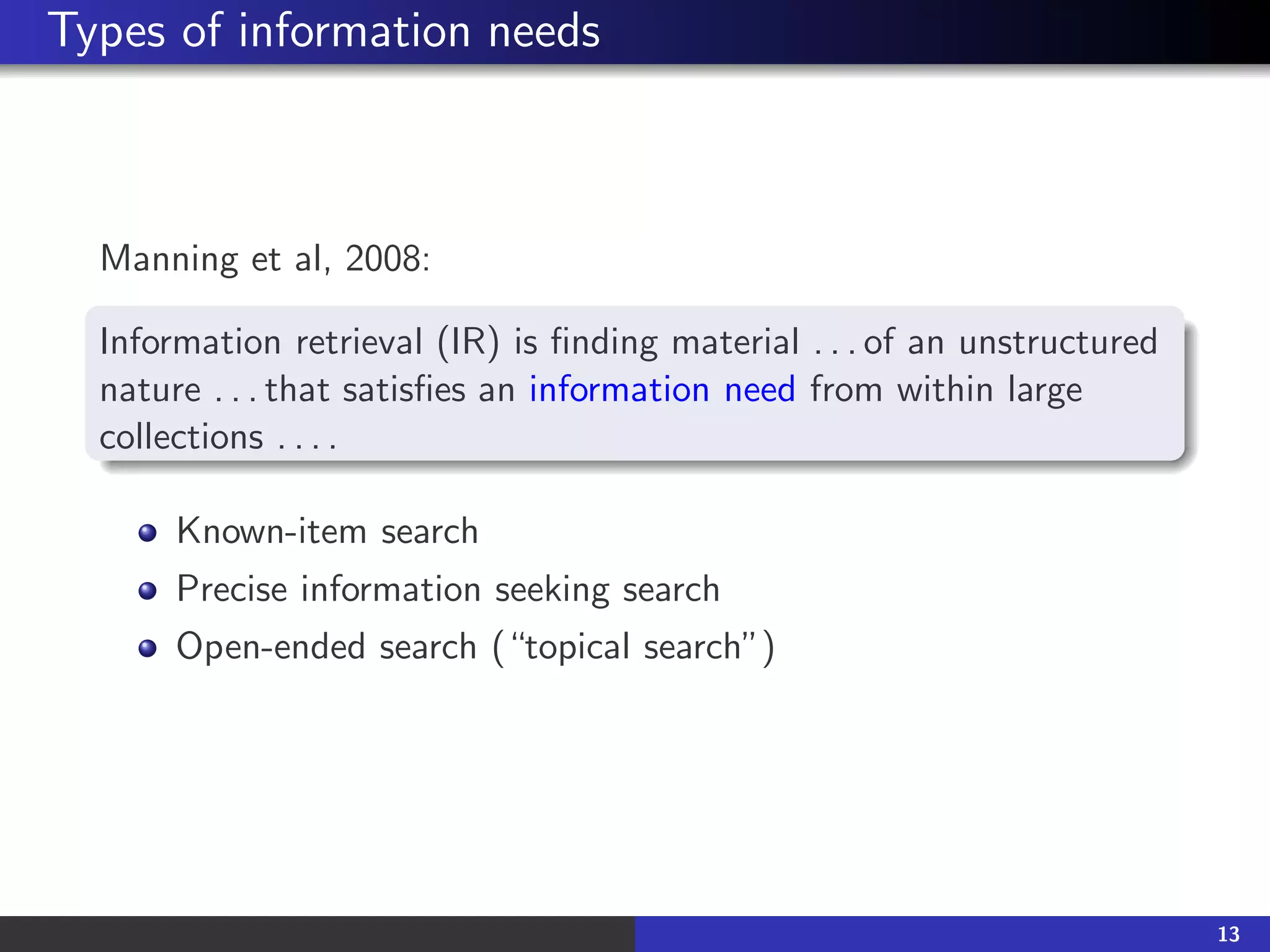
![Information scarcity vs. information abundance
Information scarcity problem (or needle-in-haystack problem):
hard to find rare information
Lord Byron’s first words? 3 years old? Long sentence to the
nurse in perfect English?
. . . when a servant had spilled an urn of hot coffee over his legs, he replied to
the distressed inquiries of the lady of the house, ’Thank you, madam, the
agony is somewhat abated.’ [not Lord Byron, but Lord Macaulay]
Information abundance problem (for more clear-cut
information needs): redundancy of obvious information
What is toxoplasmosis?
14](https://image.slidesharecdn.com/lecture1-220922063237-960abd1a/75/lecture1-pdf-15-2048.jpg)
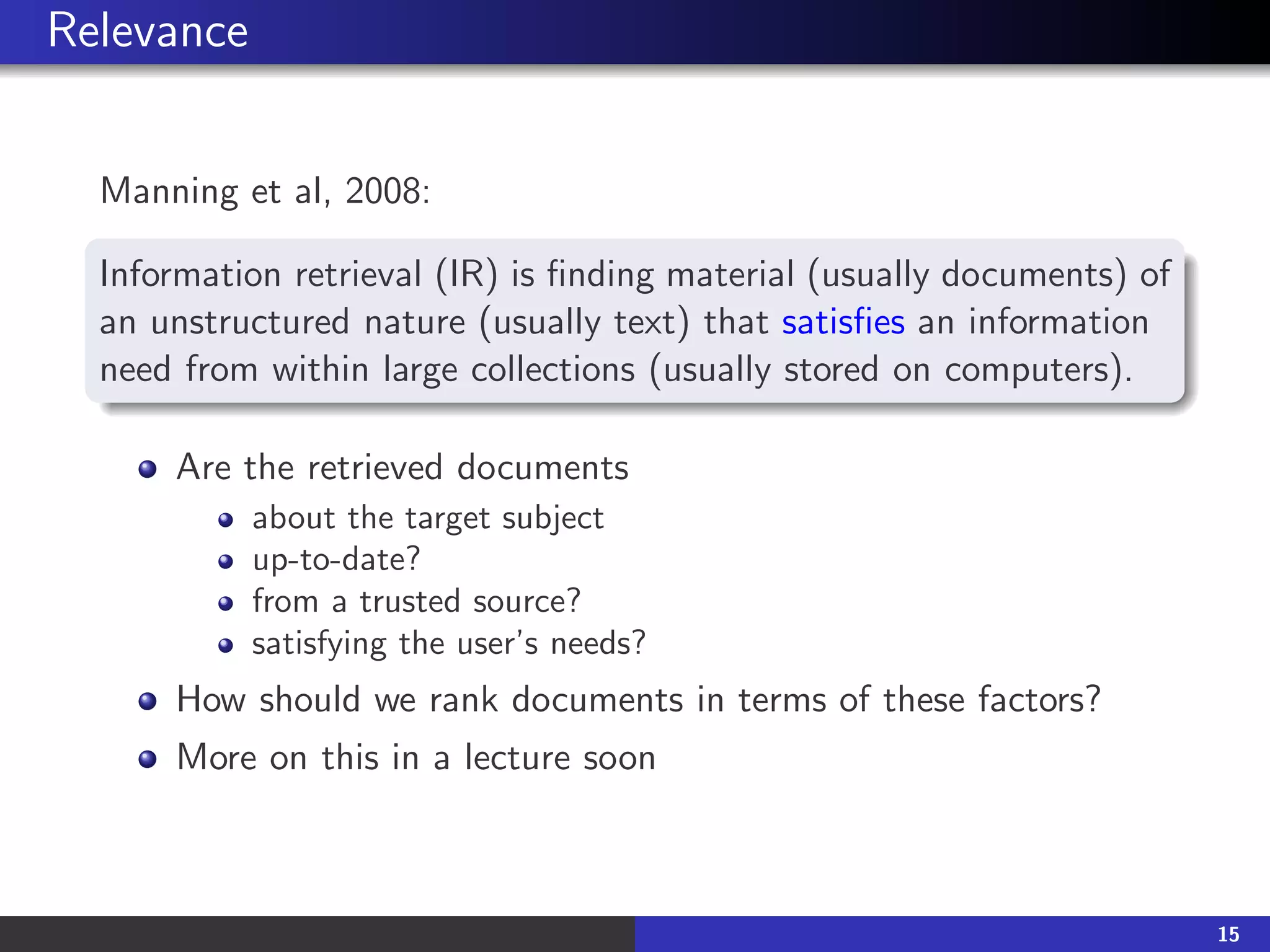

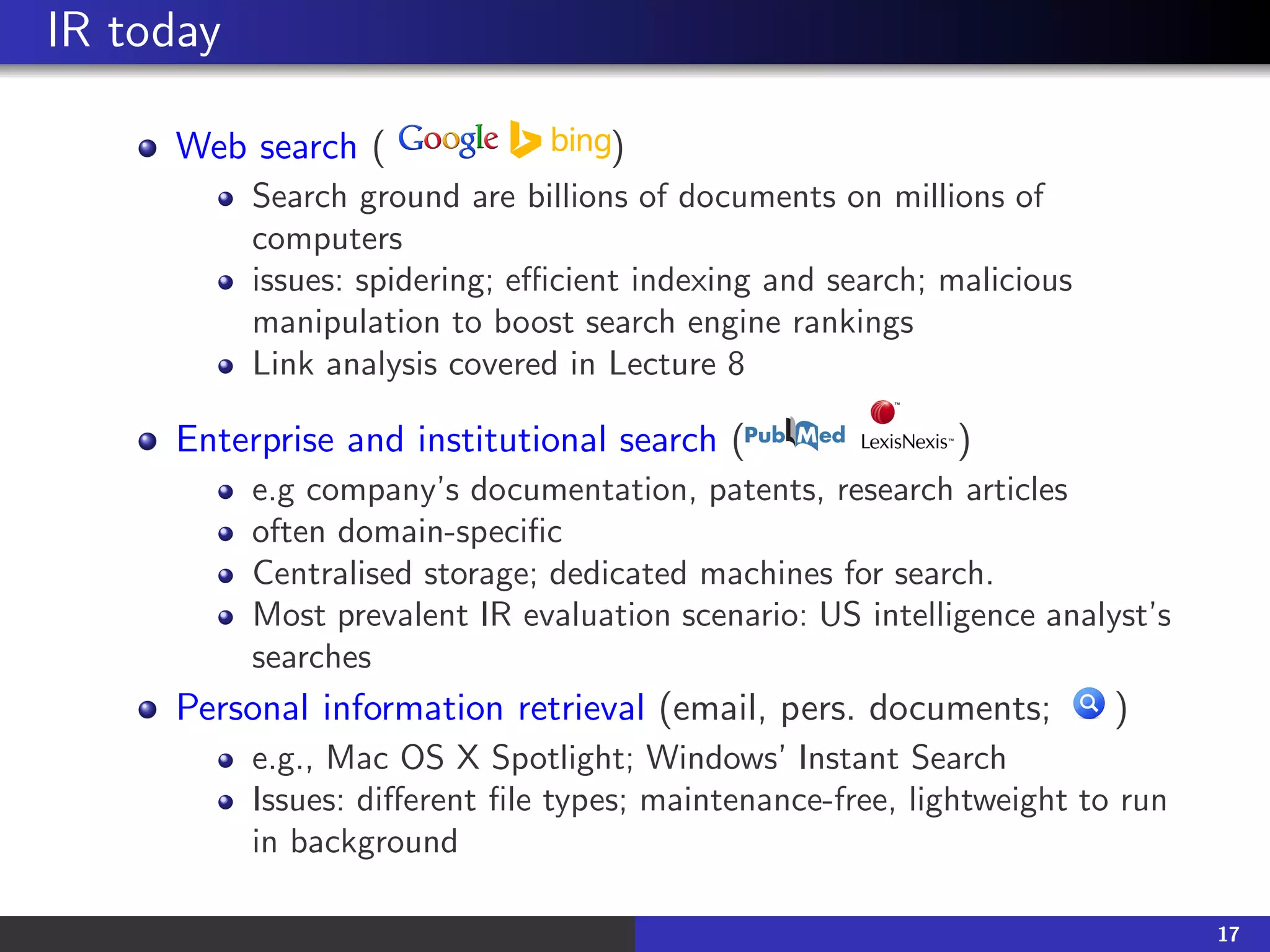
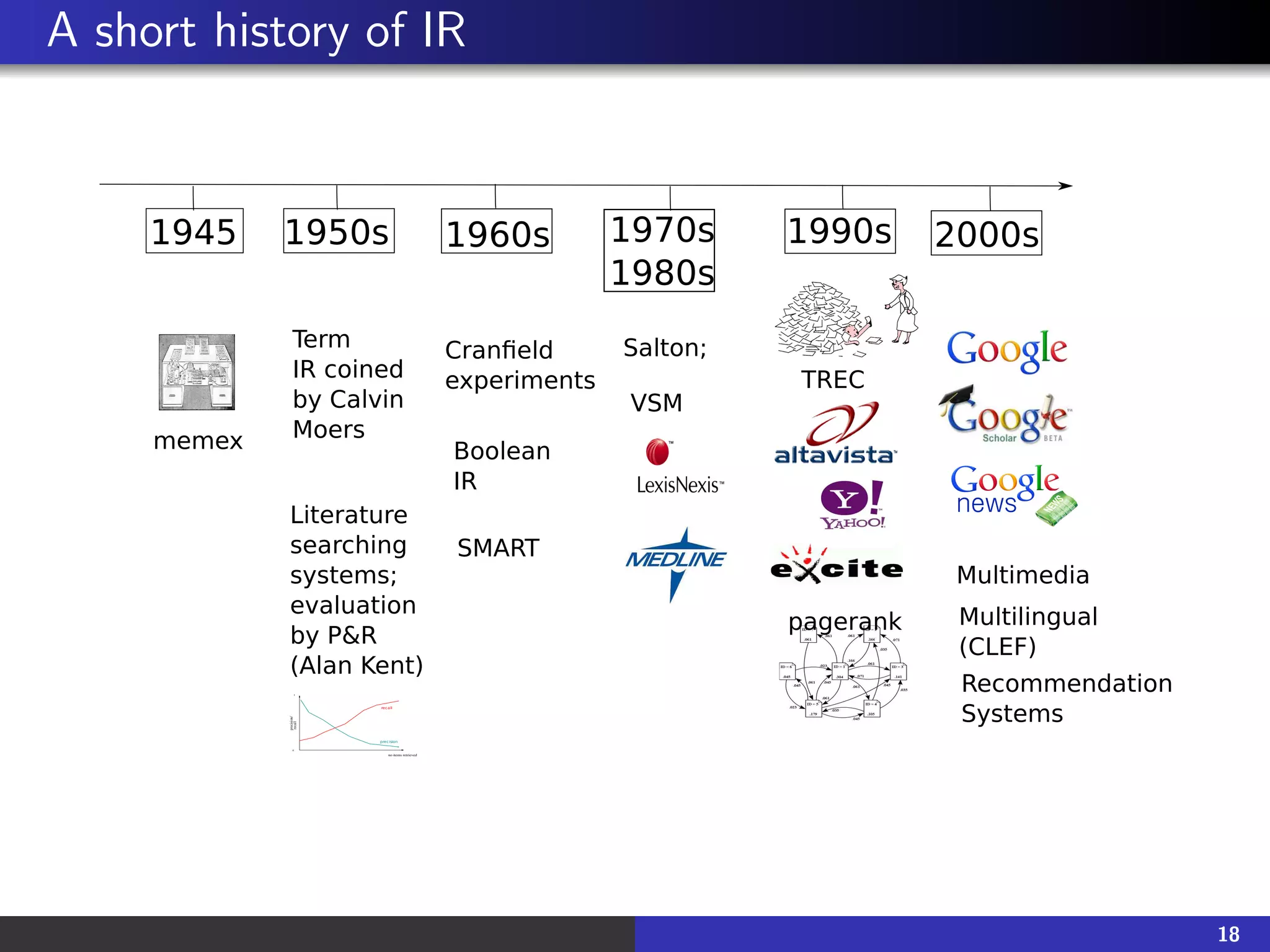

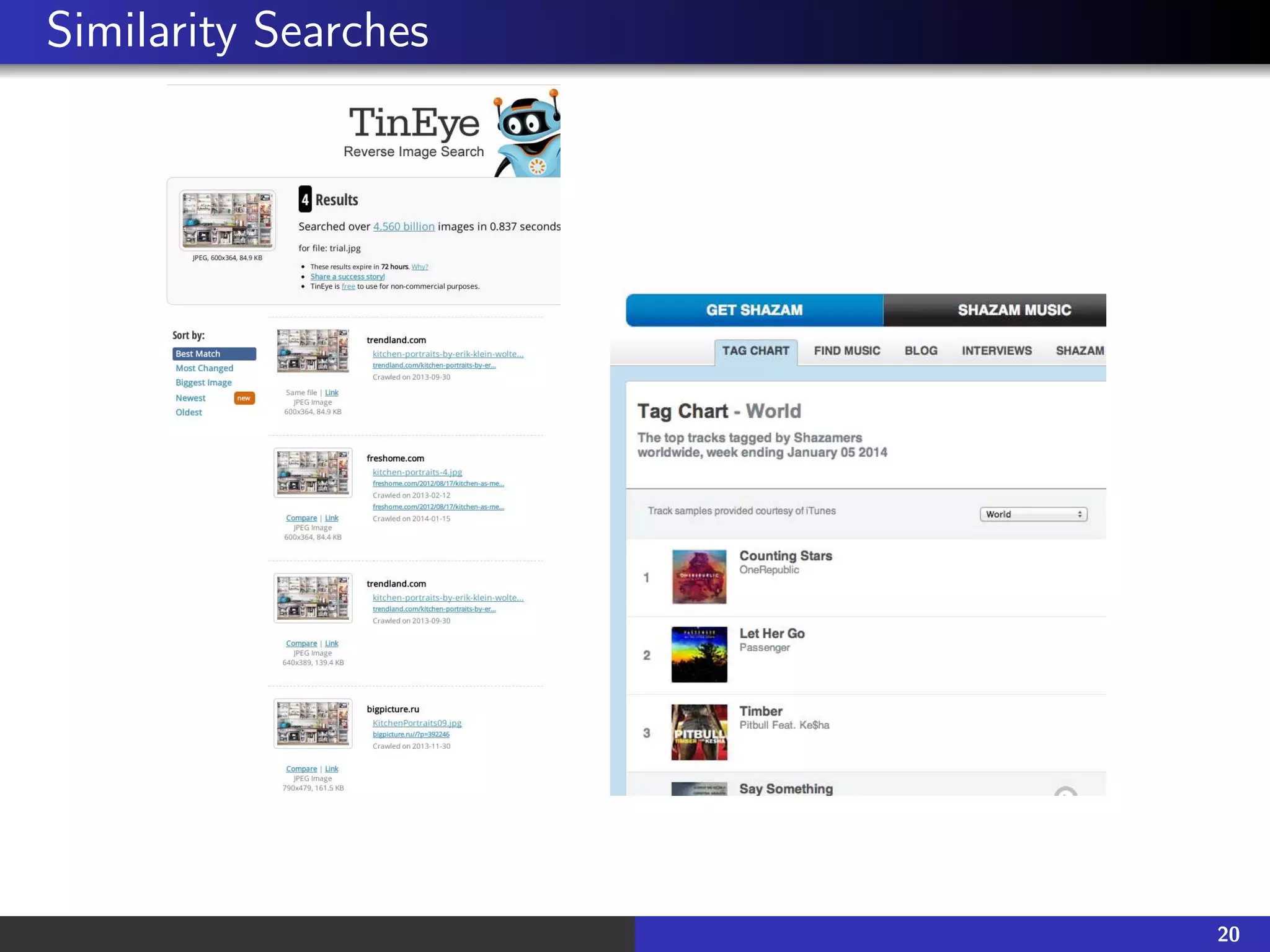
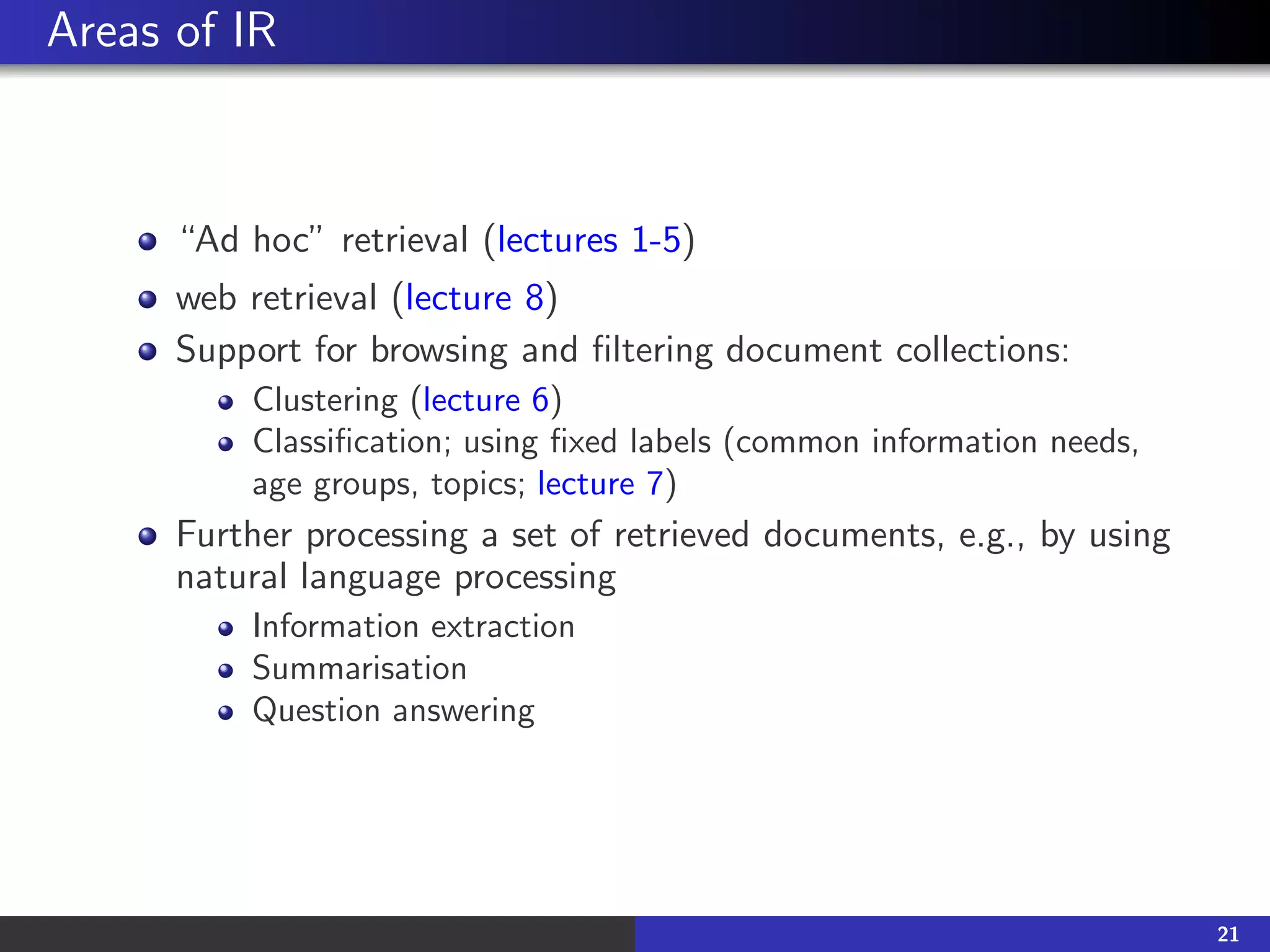
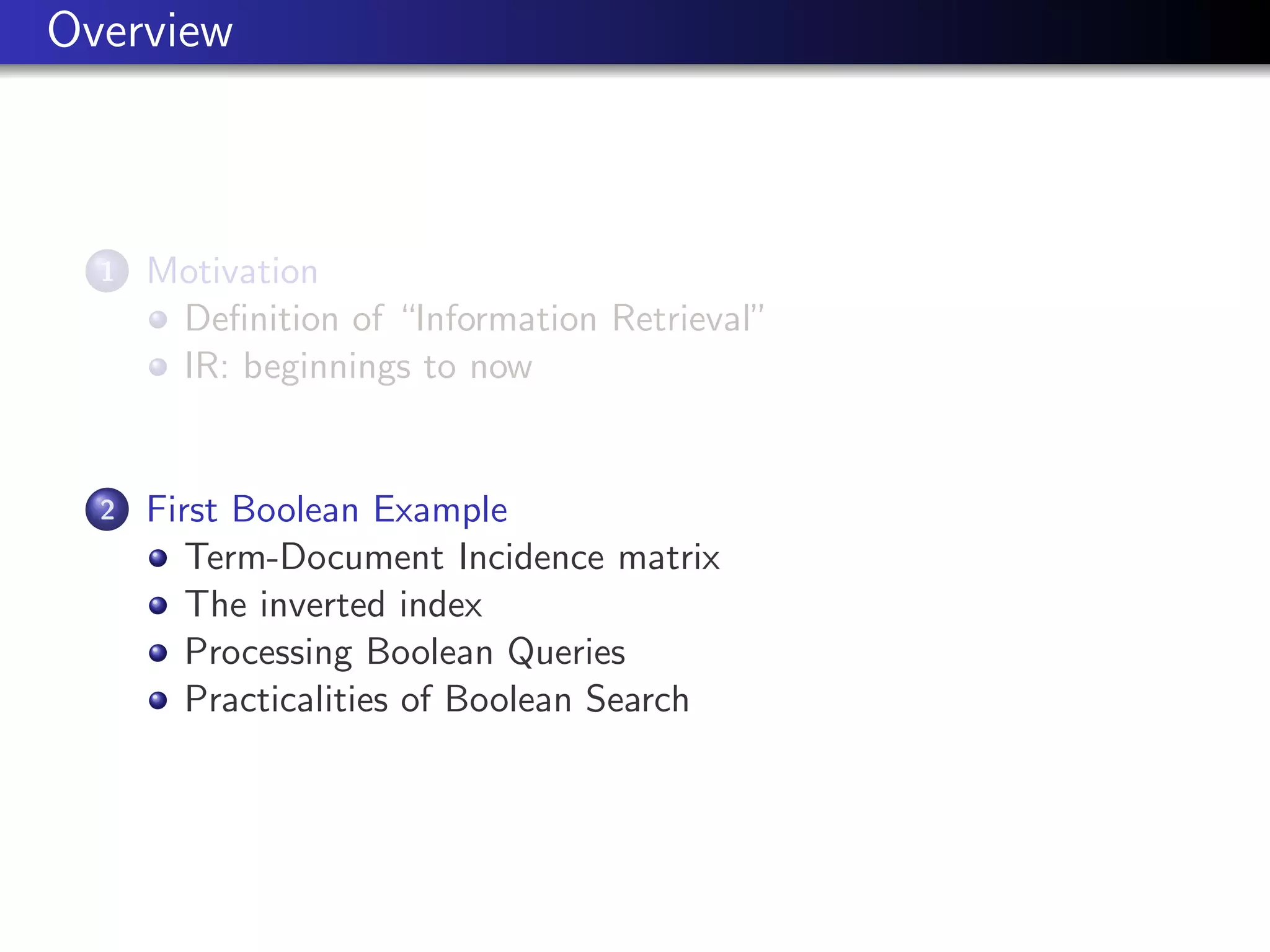
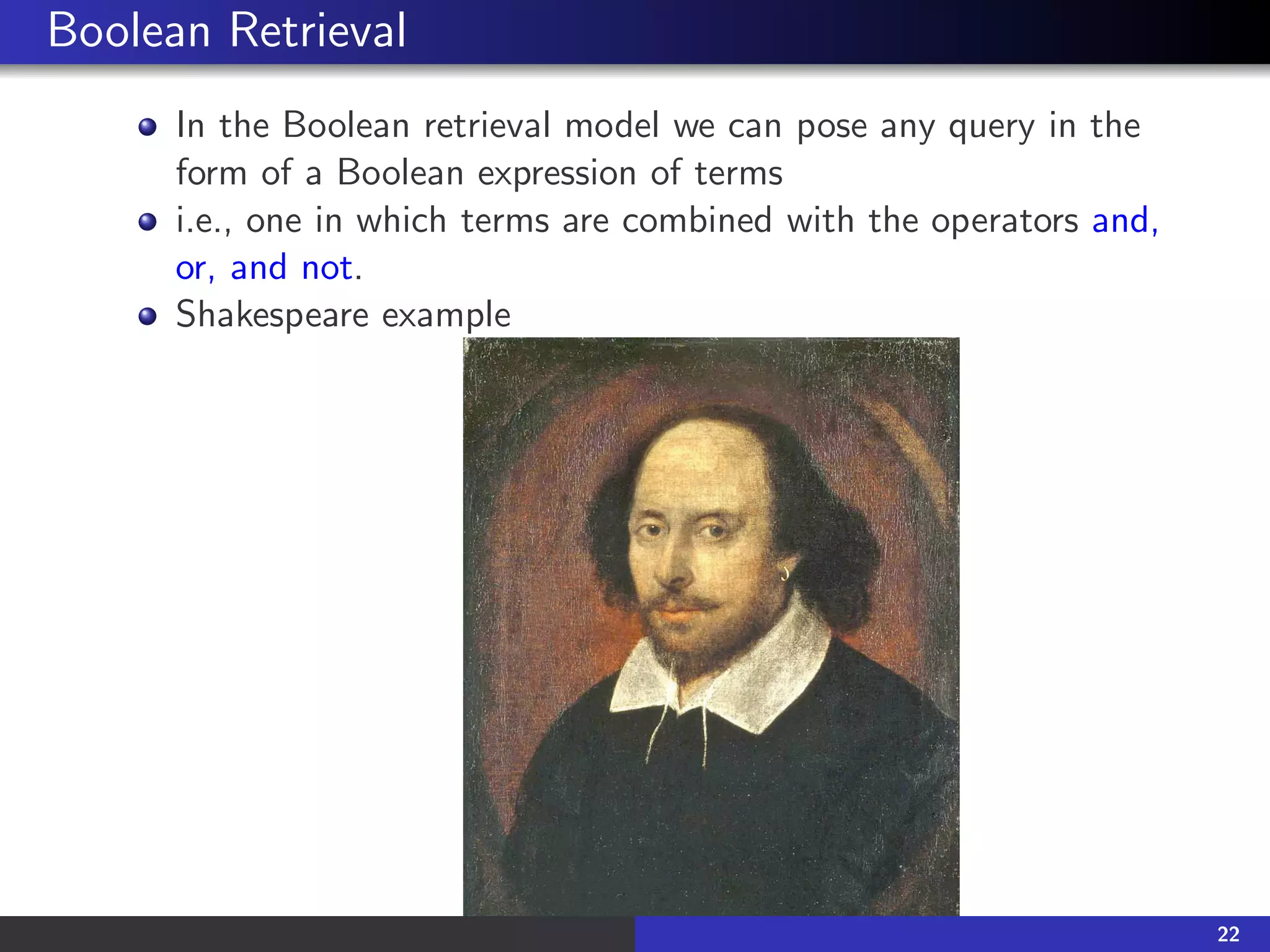

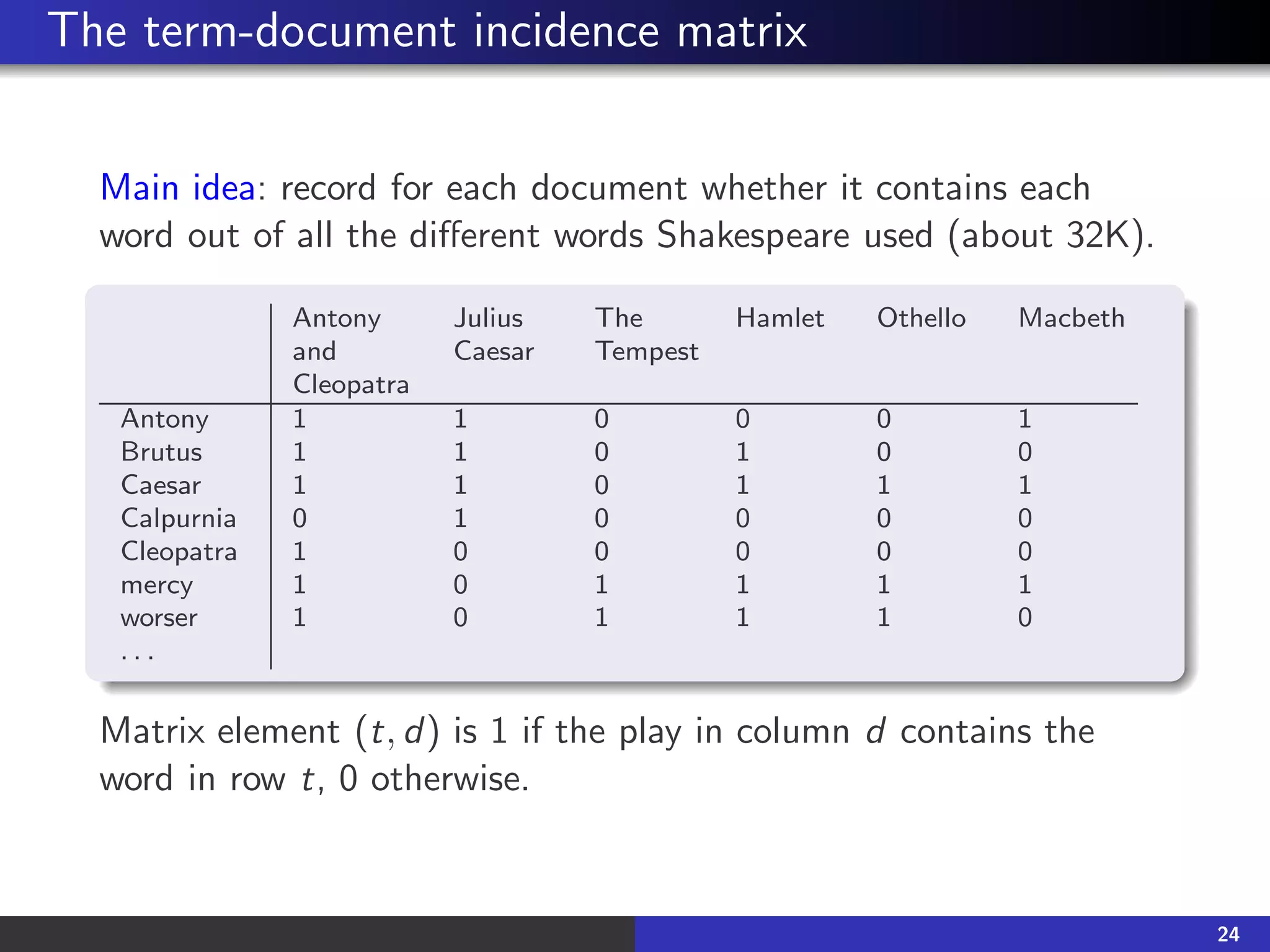

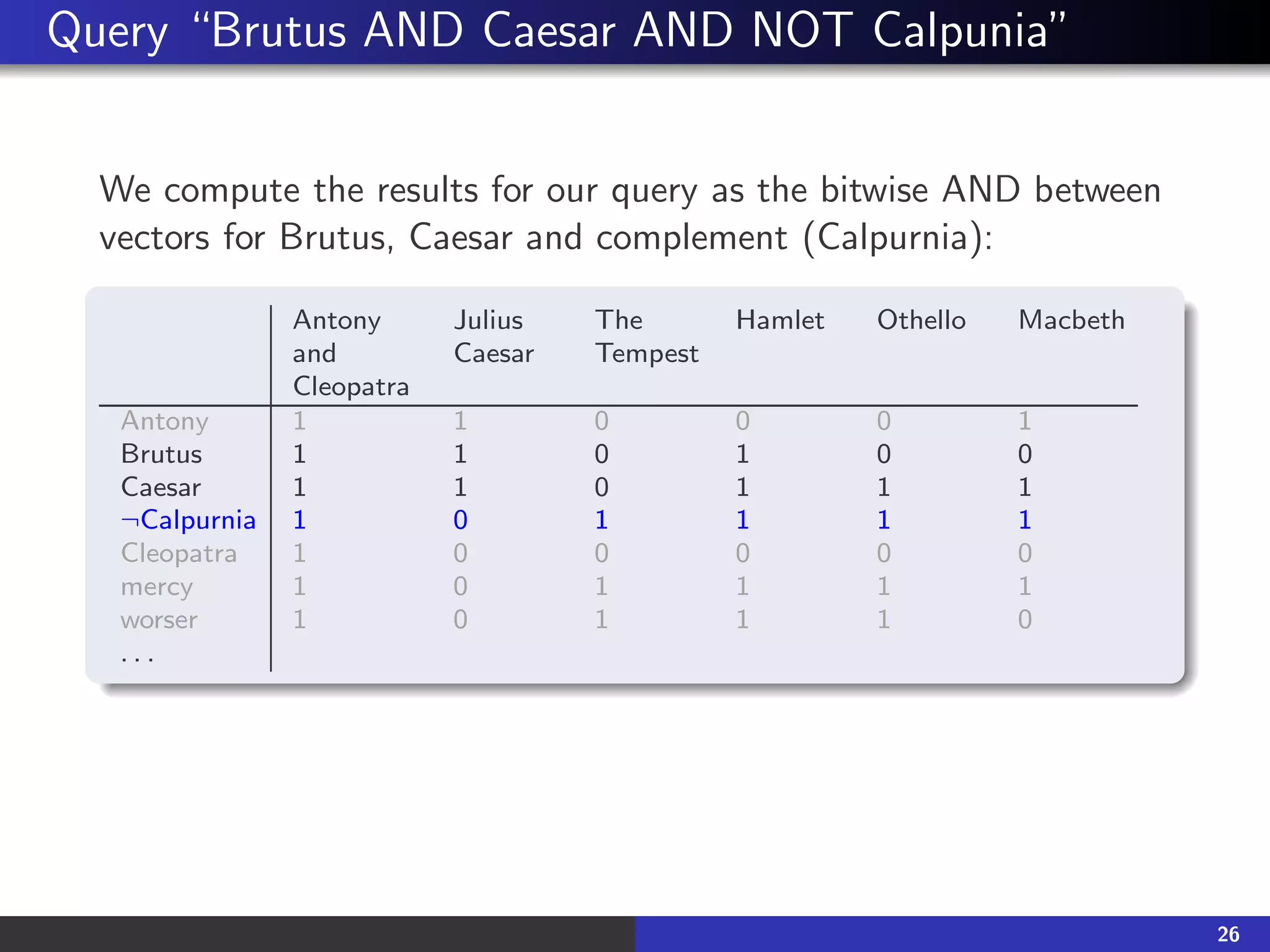
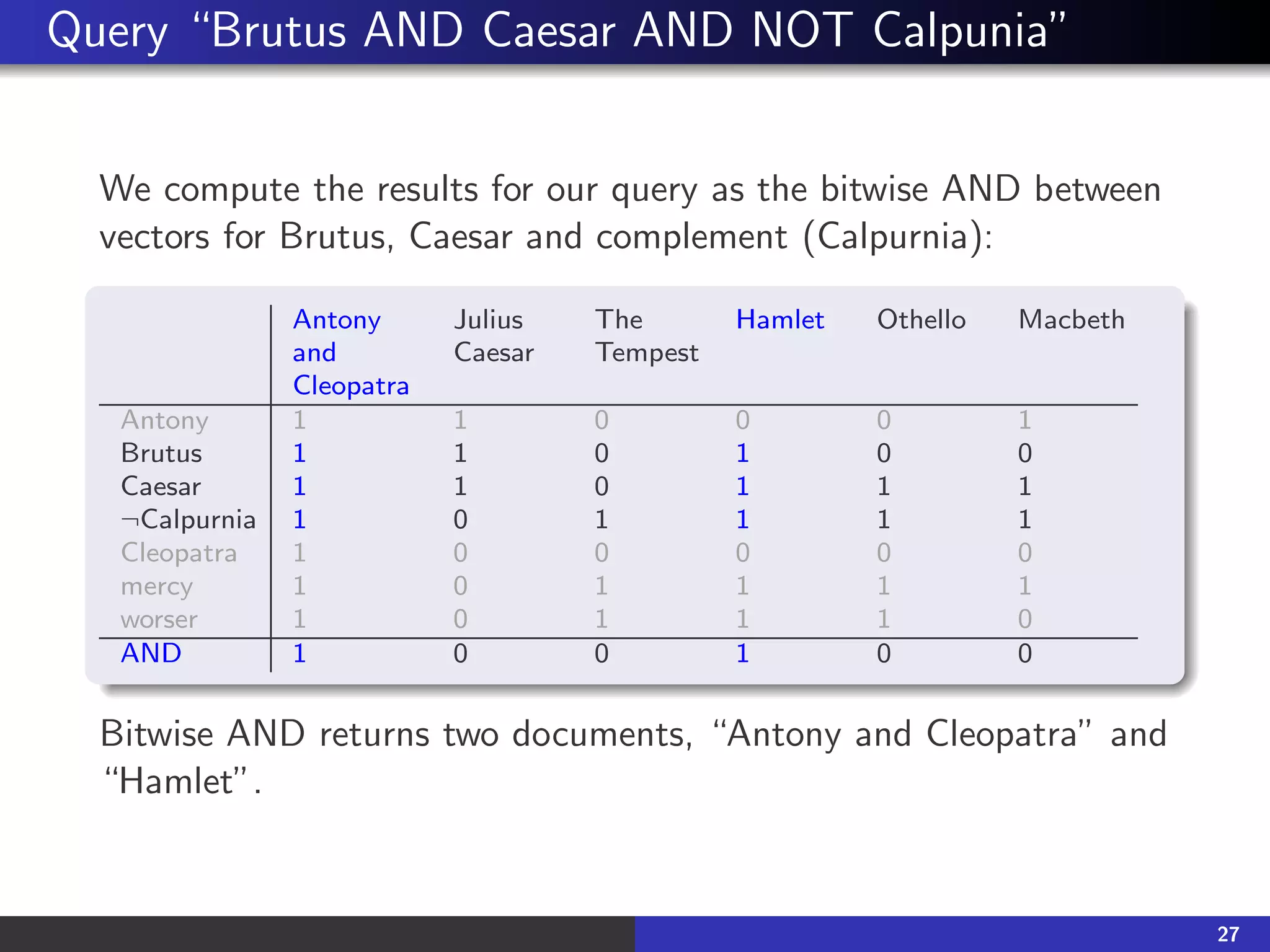
![The results: two documents
Antony and Cleopatra, Act III, Scene ii
Agrippa [Aside to Dominitus Enobarbus]: Why, Enobarbus,
When Antony found Julius Caesar dead,
He cried almost to roaring, and he wept
When at Philippi he found Brutus slain.
Hamlet, Act III, Scene ii
Lord Polonius: I did enact Julius Caesar: I was killed i’ the
Capitol; Brutus killed me.
28](https://image.slidesharecdn.com/lecture1-220922063237-960abd1a/75/lecture1-pdf-30-2048.jpg)
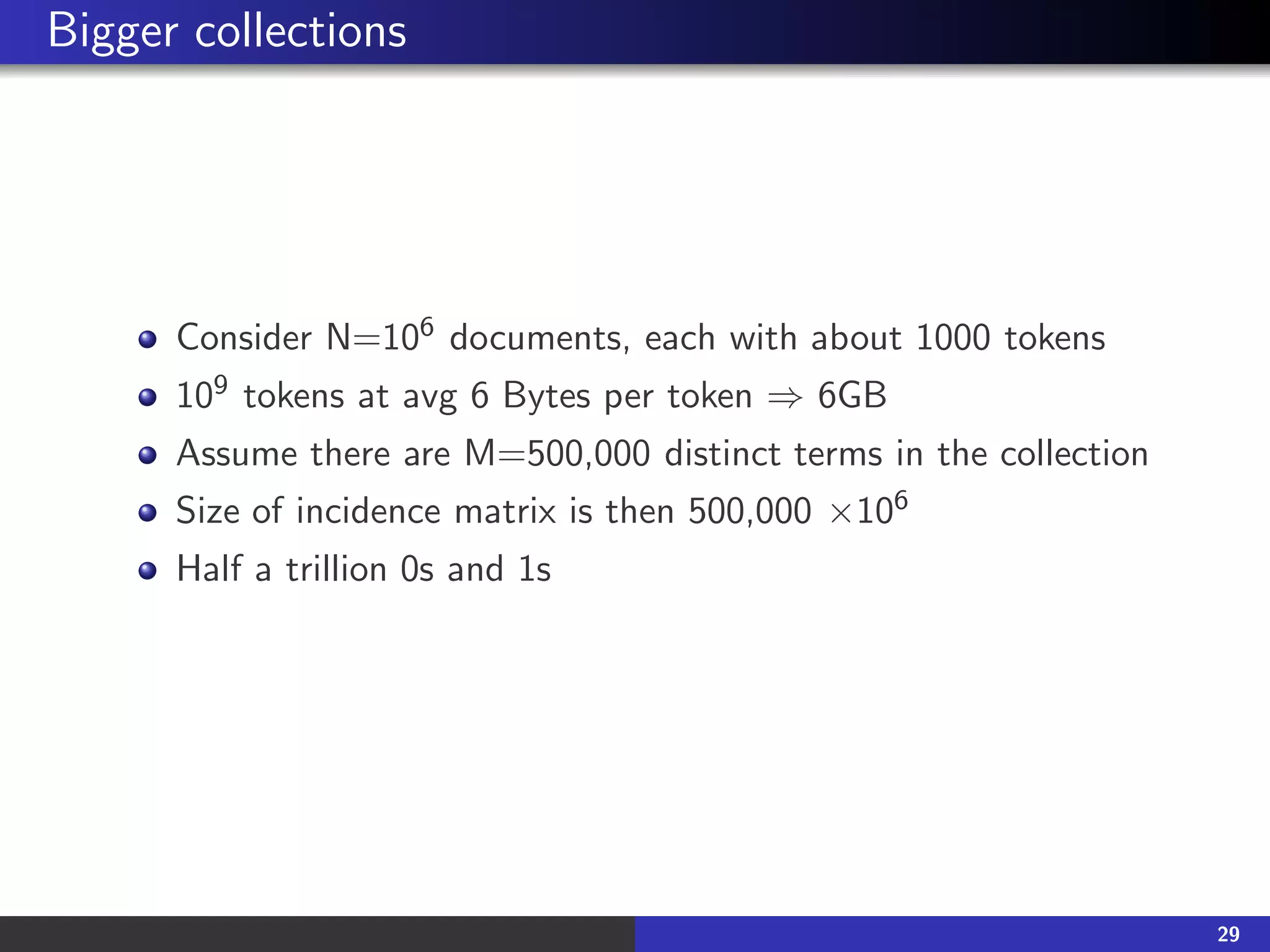
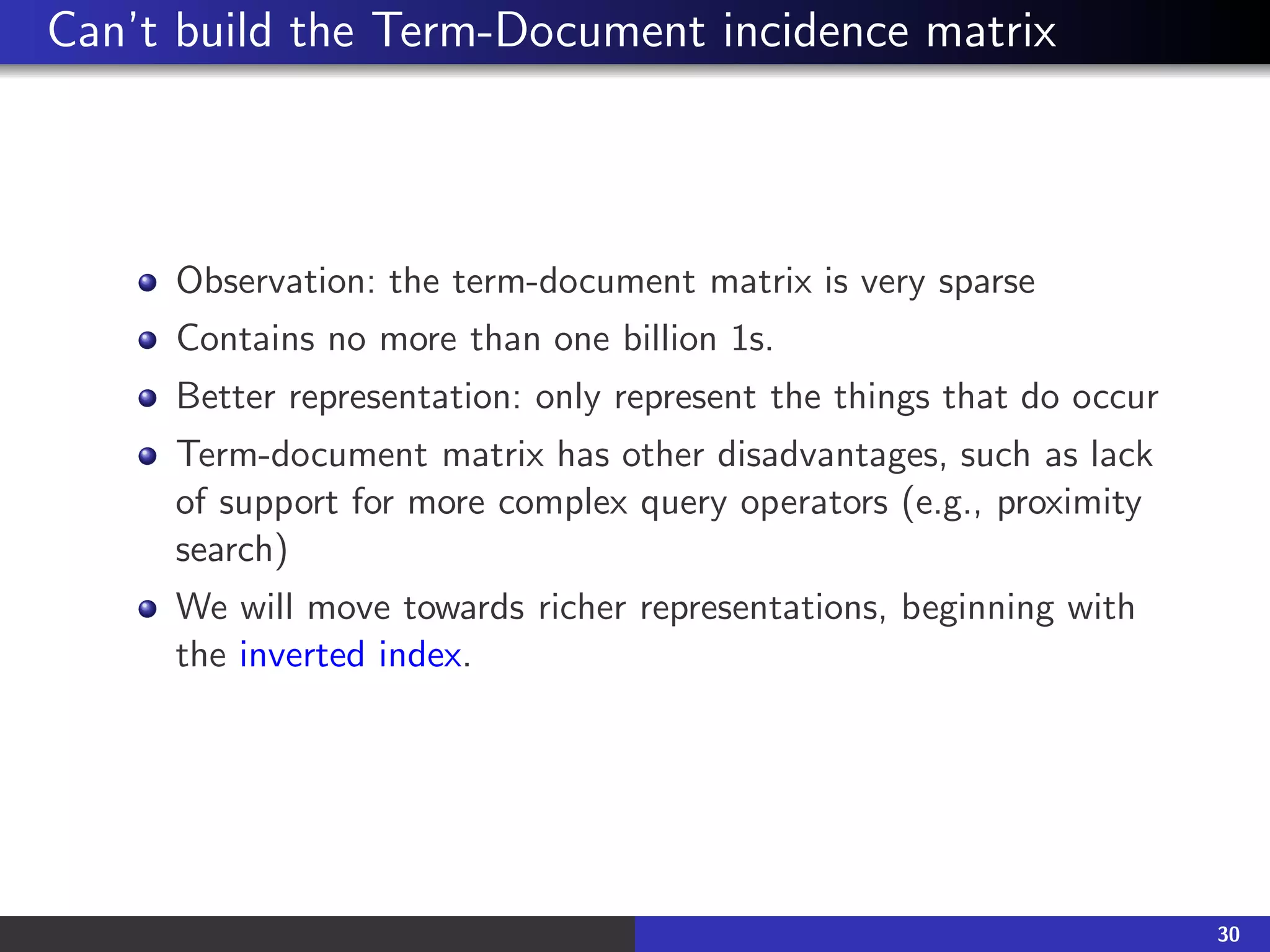
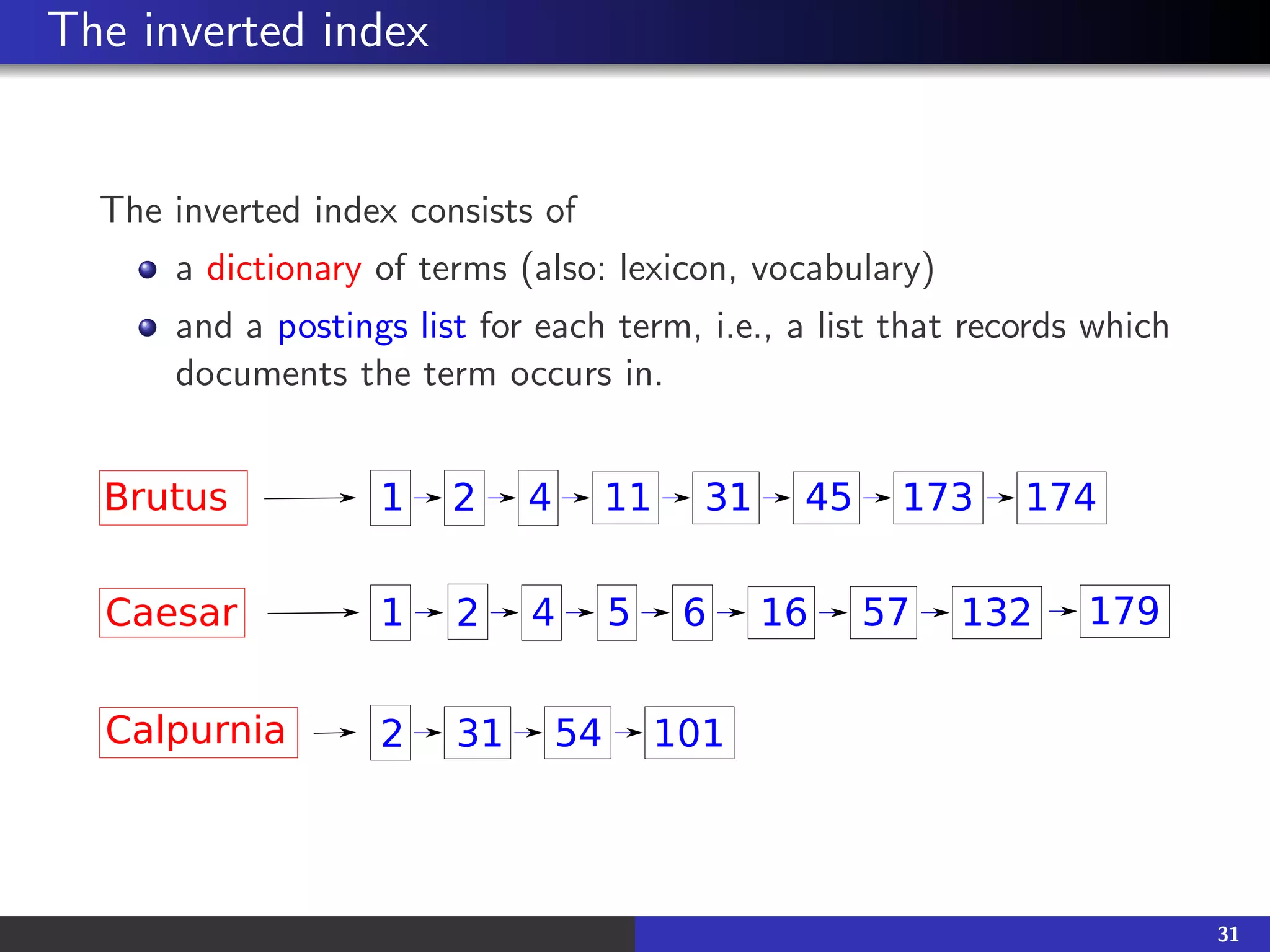
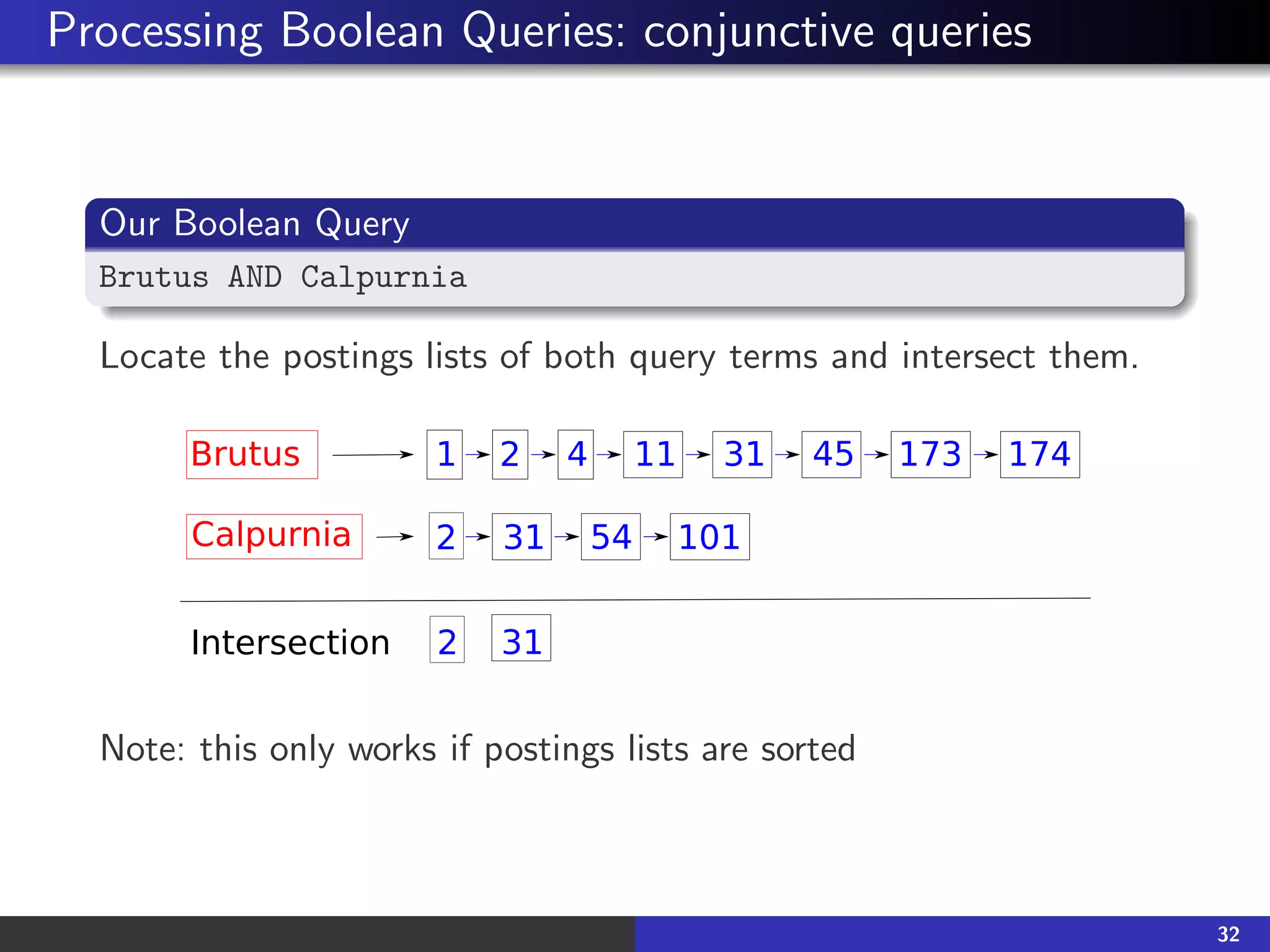
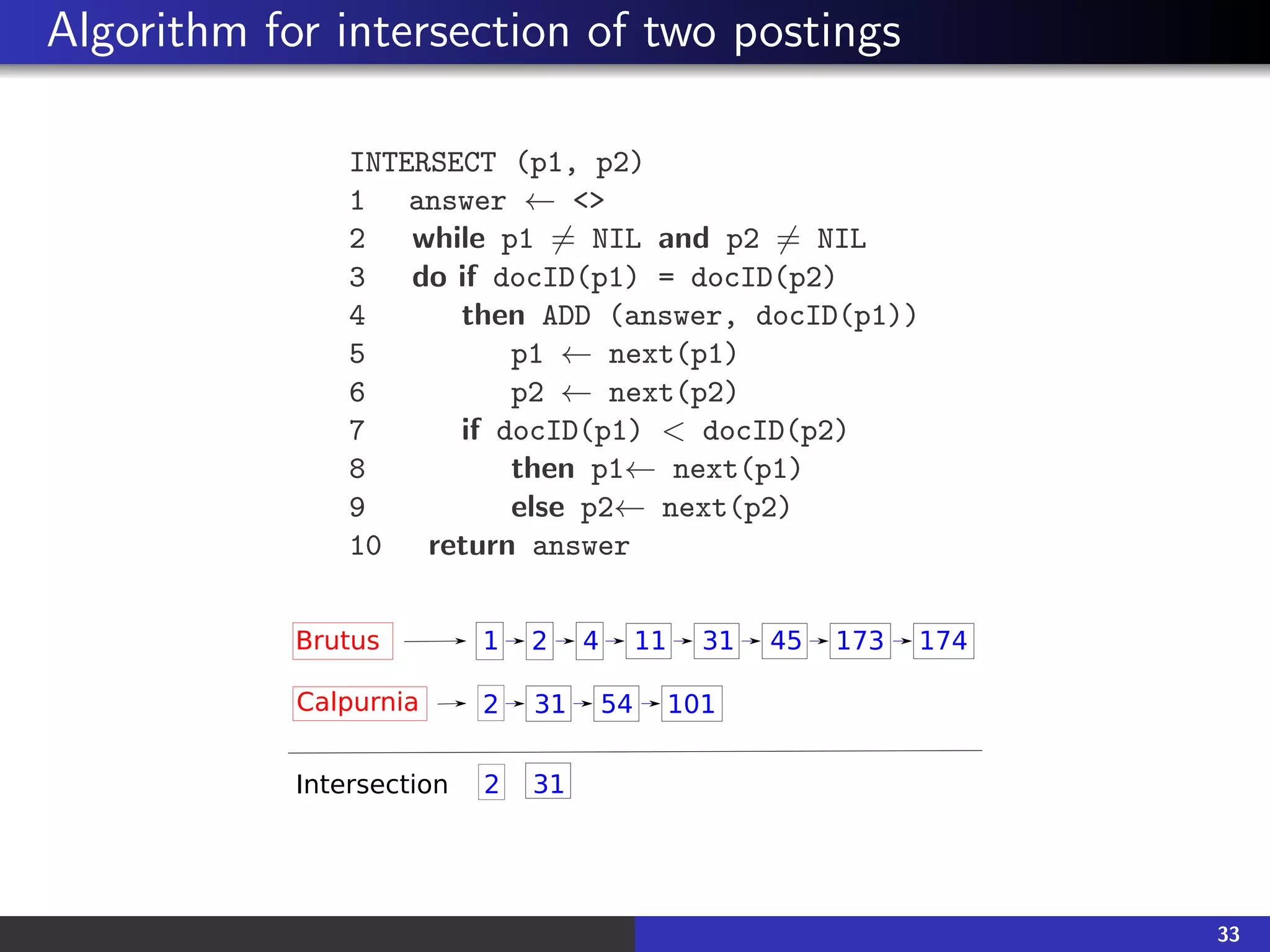
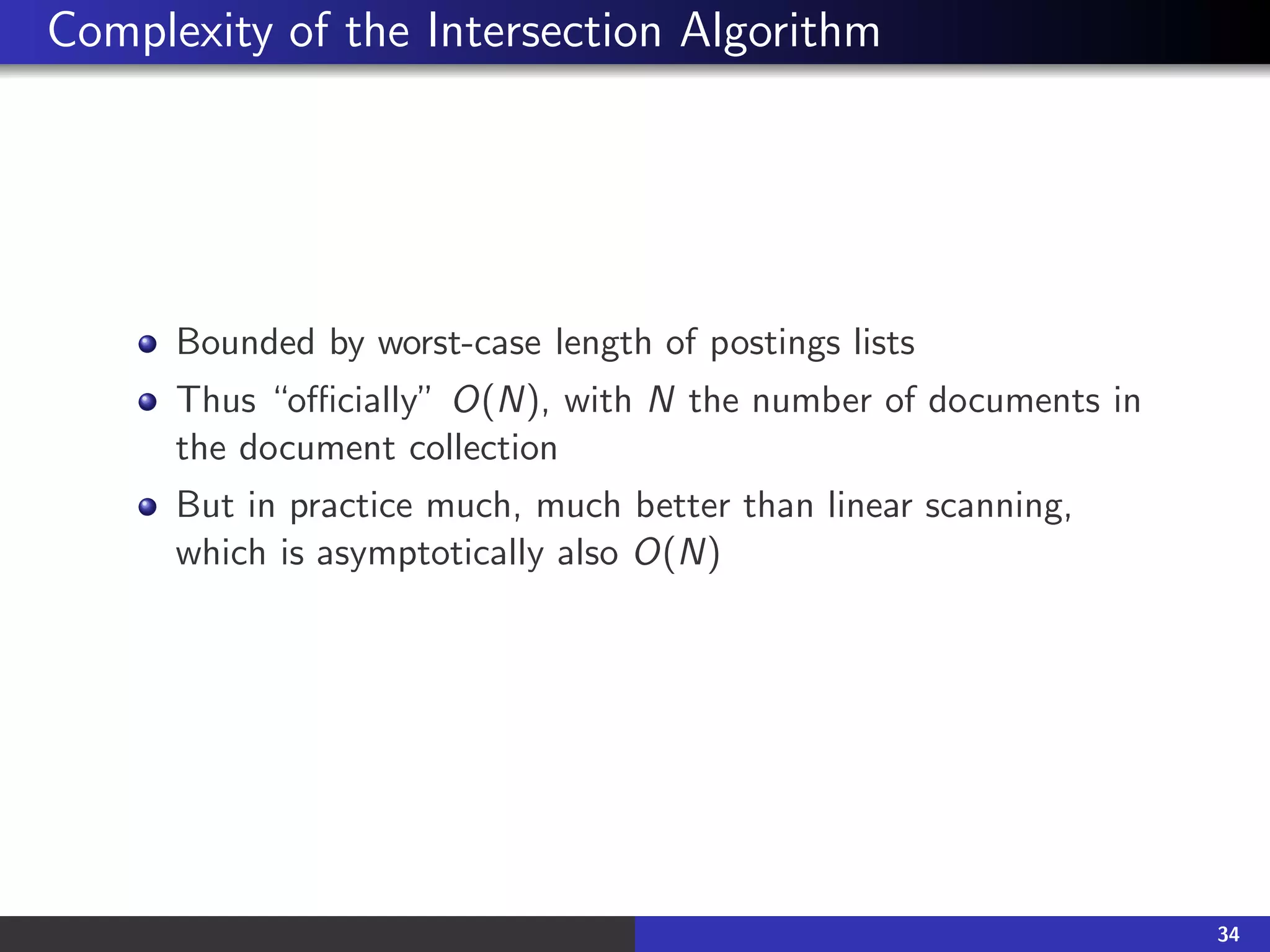

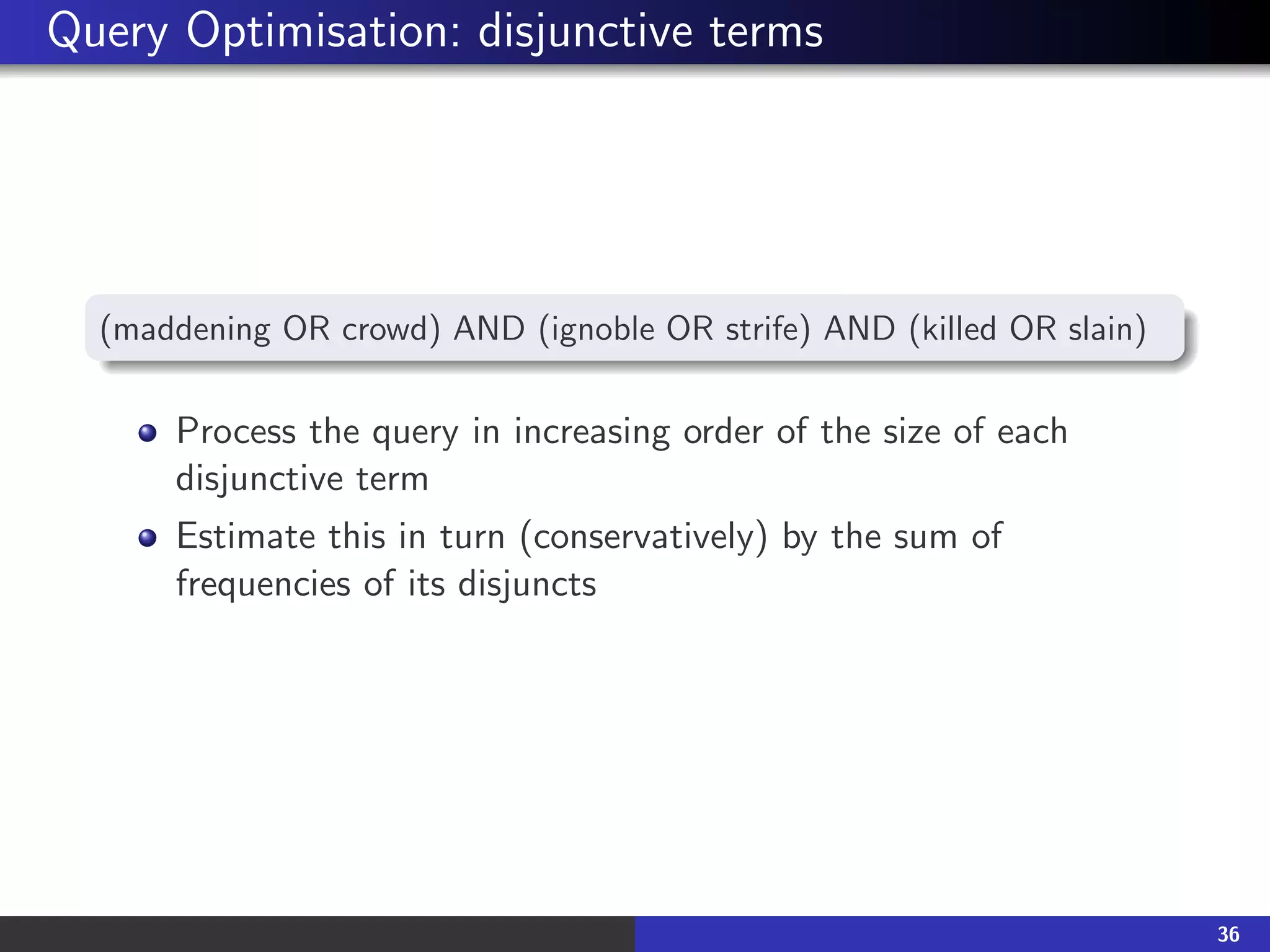
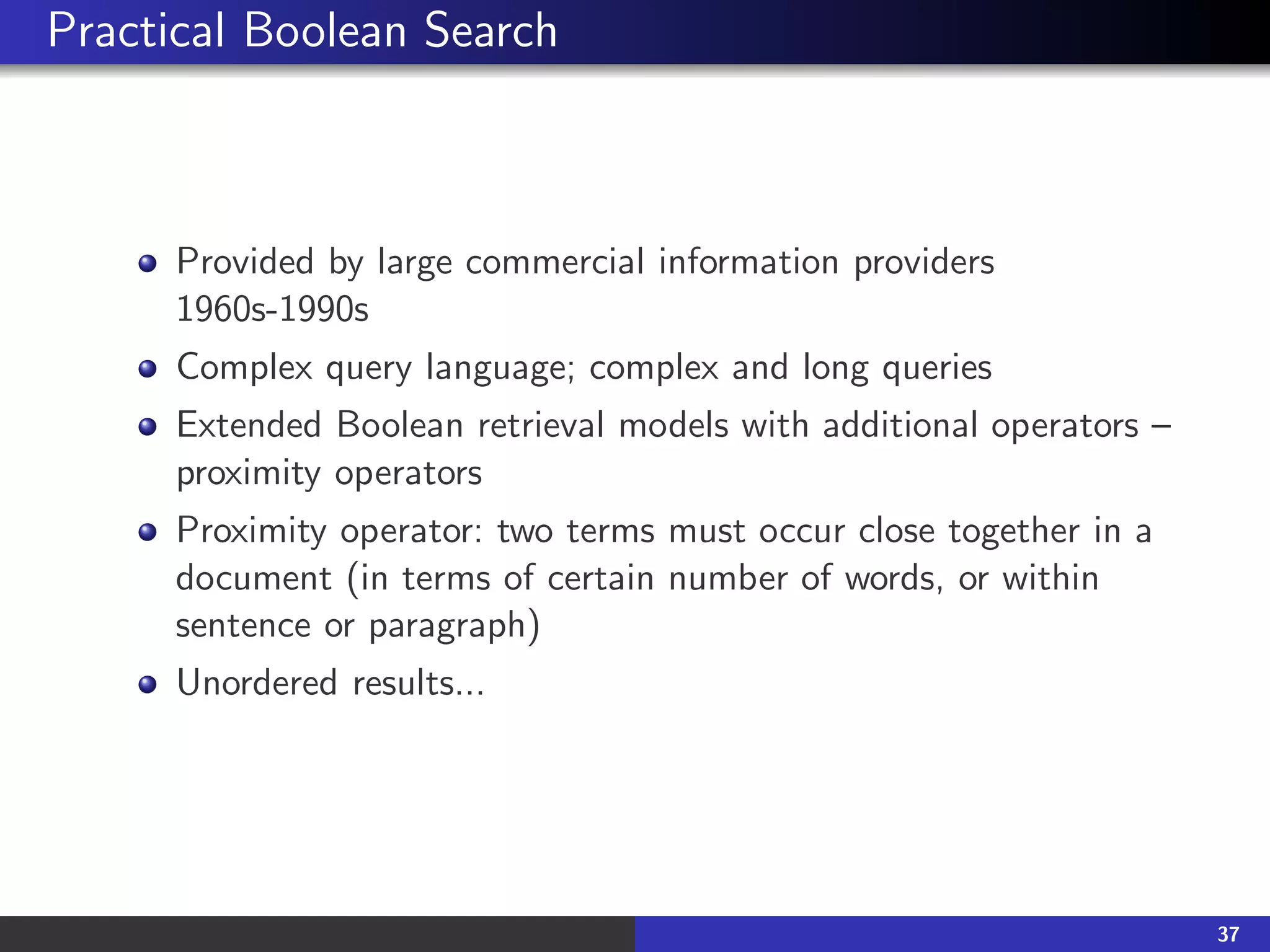
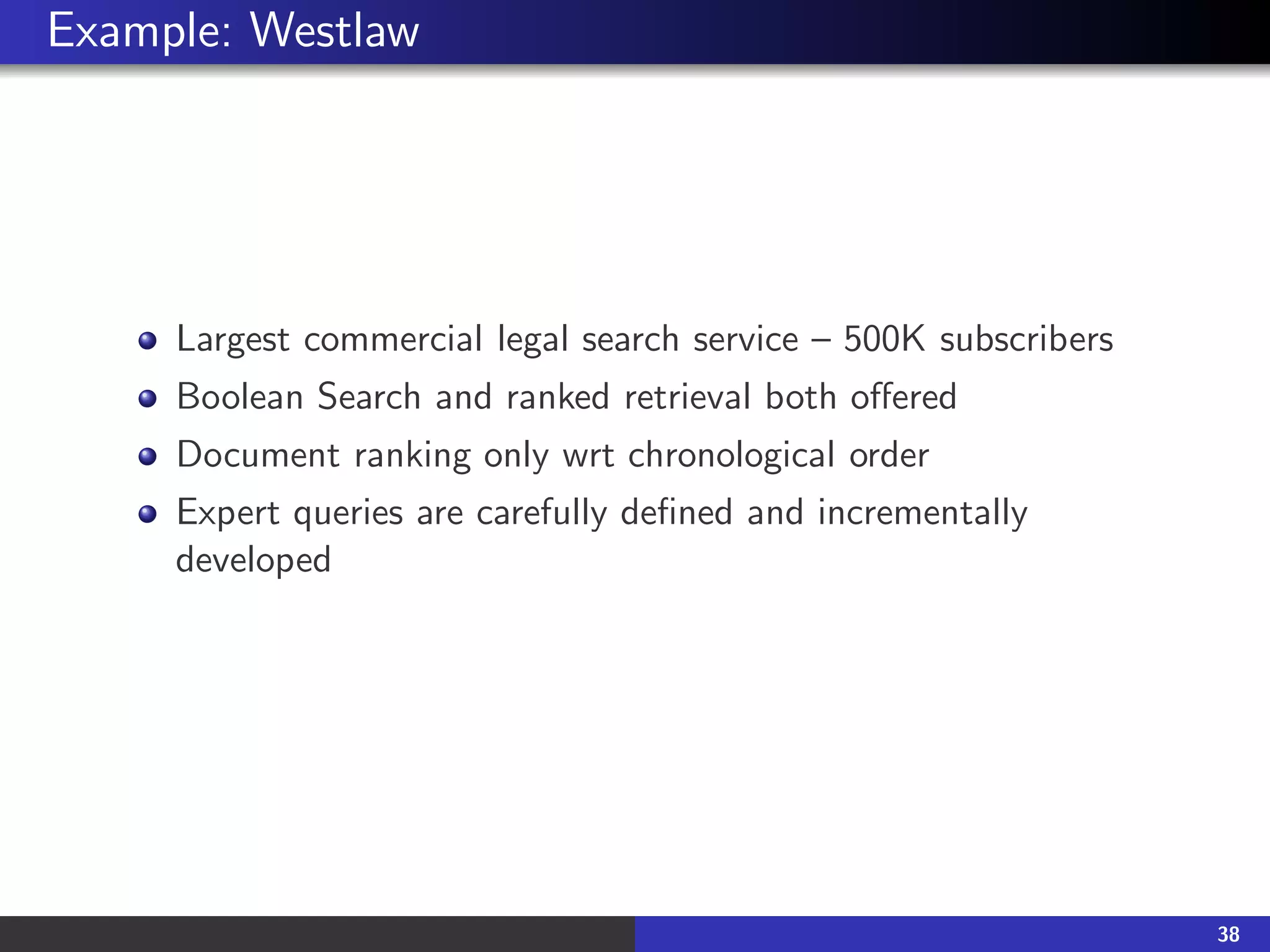
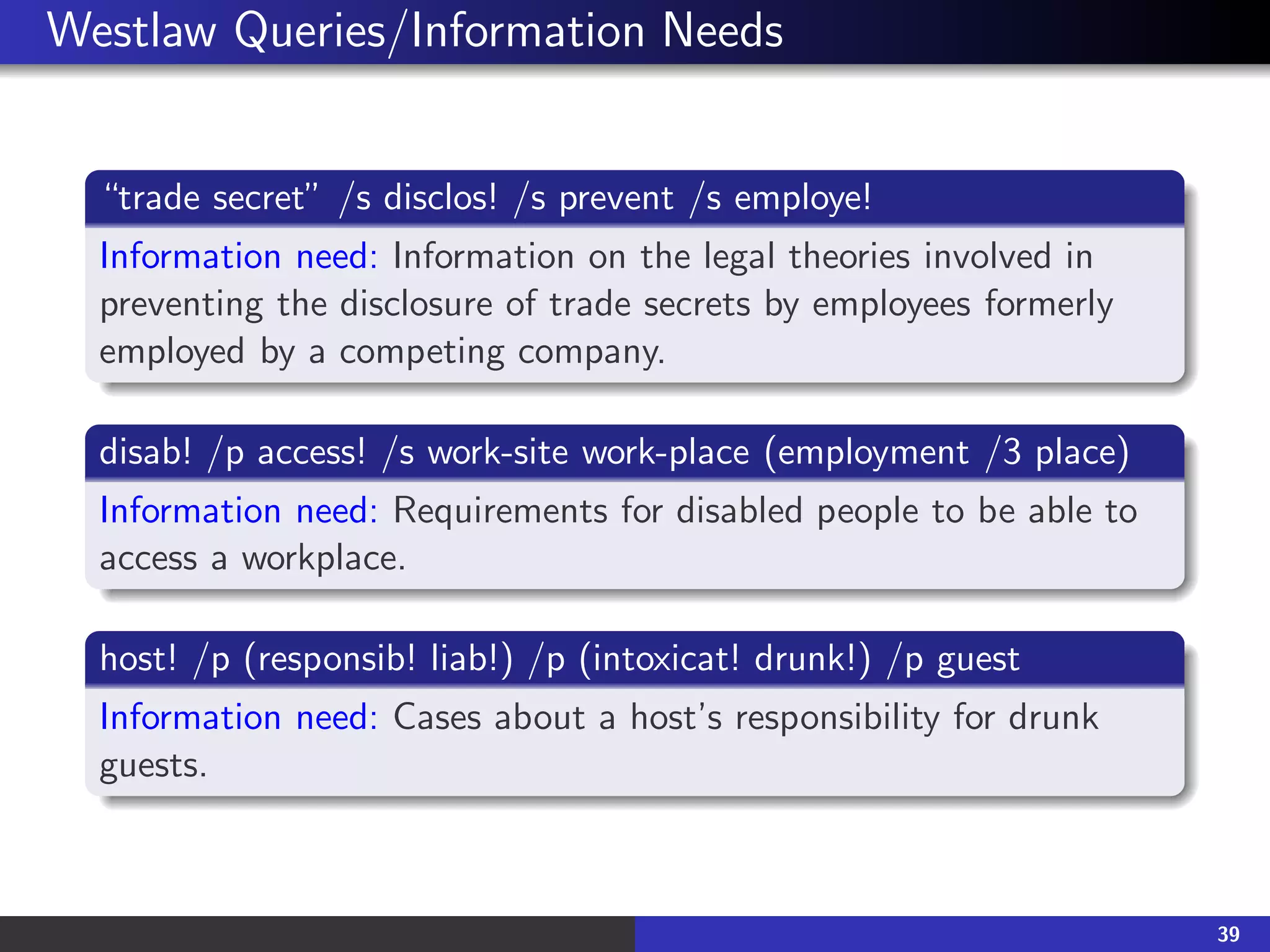
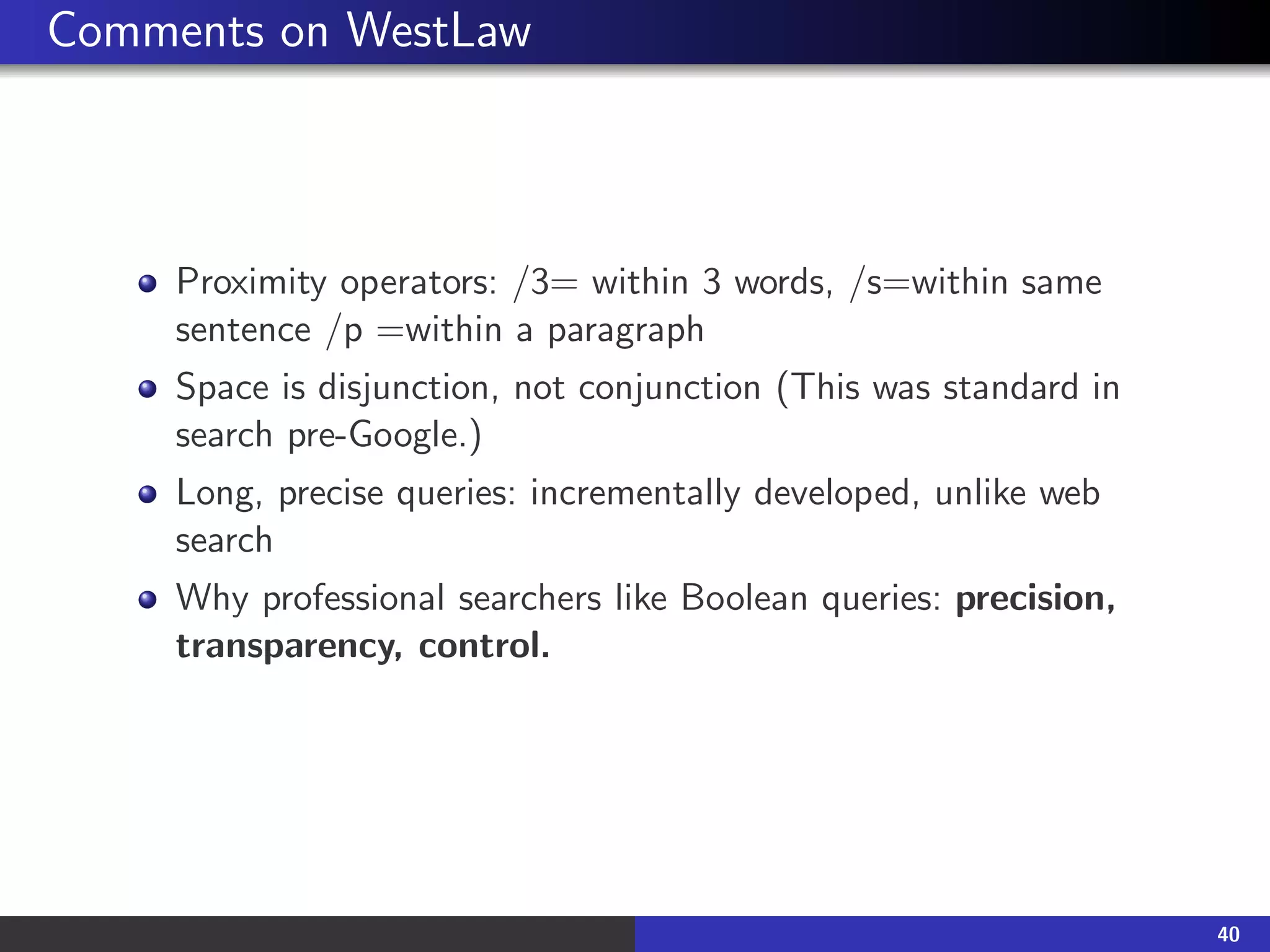
![Does Google use the Boolean Model?
On Google, the default interpretation of a query [w1 w2 ... wn] is
w1 AND w2 AND ... AND wn
Cases where you get hits which don’t contain one of the w−i:
Page contains variant of wi (morphology, misspelling,
synonym)
long query (n is large)
Boolean expression generates very few hits
wi was in the anchor text
Google also ranks the result set
Simple Boolean Retrieval returns matching documents in no
particular order.
Google (and most well-designed Boolean engines) rank hits
according to some estimator of relevance
41](https://image.slidesharecdn.com/lecture1-220922063237-960abd1a/75/lecture1-pdf-43-2048.jpg)
